预约演示
更新于:2025-12-12
Loratadine/Pseudoephedrine Sulfate
氯雷他定/硫酸伪麻黄碱
更新于:2025-12-12
概要
基本信息
药物类型 小分子化药 |
别名 Compound Loratadine、Loratadine and Pseudoephedrine、Loratadine and Pseudoephedrine sulfate + [10] |
作用方式 激动剂、拮抗剂 |
作用机制 ADRA1激动剂(肾上腺素能受体α-1家族激动剂)、ADRA2激动剂(肾上腺素能受体α-2家族激动剂)、H1 receptor拮抗剂(组胺H1受体拮抗剂) |
非在研适应症- |
原研机构 |
非在研机构 |
权益机构- |
最高研发阶段批准上市 |
最高研发阶段(中国)批准上市 |
特殊审评- |
登录后查看时间轴
结构/序列
分子式C22H23ClN2O2 |
InChIKeyJCCNYMKQOSZNPW-UHFFFAOYSA-N |
CAS号79794-75-5 |
查看全部结构式(2)
关联
8
项与 氯雷他定/硫酸伪麻黄碱 相关的临床试验CTR20180540
评估氯雷他定片作用于健康受试者空腹/餐后状态下的开放、随机、三周期、部分重复交叉生物等效性研究
主要目的:研究空腹/餐后状态下受试制剂氯雷他定片(雪苏®,规格:10mg/片)与参比制剂氯雷他定片(Claritine®,规格:10mg/片)在健康受试者体内的药代动力学,评价空腹/餐后状态口服两种制剂的生物等效性。 次要目的:研究受试制剂和参比制剂在健康受试者中的安全性。
开始日期2018-05-04 |
申办/合作机构 |
NCT03517943
A Randomized, Crossover Manufacturing Transfer Study Comparing the Bioequivalence of a Single Oral Dose of Claritin-D® 12-Hour Extended Release Tablet (Loratadine 5mg/Pseudoephedrine Sulfate 120 mg, Manufacturer-SAG) to a Single Oral Dose of Claritin-D® 12-Hour Extended Release Tablet (Loratadine 5 mg/Pseudoephedrine Sulfate 120 mg, Manufacturer-Heist) Under Fed Conditions in Healthy Adult Subjects
To evaluate the bioequivalence of one extended release combination (loratadine 5 mg/pseudoephedrine sulfate 120 mg) tablet manufactured for Bayer HealthCare LLC by SAG Manufacturing, S.L.U. Madrid, Spain (test treatment) to the extended release combination (loratadine 5 mg/pseudoephedrine sulfate 120 mg) tablet manufactured for Bayer SA-NV by Schering- Plough Labo NV Heist (reference treatment) which is currently marketed in Europe.
开始日期2018-04-24 |
申办/合作机构 |
NCT03517930
A Randomized, Crossover Manufacturing Transfer Study Comparing the Bioequivalence of a Single Oral Dose of Claritin-D® 12-Hour Extended Release Tablet (Loratadine 5mg/Pseudoephedrine Sulfate 120 mg, Manufacturer-SAG) to a Single Oral Dose of Claritin-D® 12-Hour Extended Release Tablet (Loratadine 5 mg/Pseudoephedrine Sulfate 120 mg, Manufacturer-Heist) Under Fasted Conditions in Healthy Adult Subjects
To evaluate the bioequivalence of one extended release combination (loratadine 5 mg/pseudoephedrine sulfate 120 mg) tablet manufactured for Bayer HealthCare LLC by SAG Manufacturing, S.L.U. Madrid, Spain (test treatment) to the extended release combination (loratadine 5 mg/pseudoephedrine sulfate 120 mg) tablet manufactured for Bayer SA-NV by Schering-Plough Labo NV Heist (reference treatment) which is currently marketed in Europe.
开始日期2018-04-17 |
申办/合作机构 |
100 项与 氯雷他定/硫酸伪麻黄碱 相关的临床结果
登录后查看更多信息
100 项与 氯雷他定/硫酸伪麻黄碱 相关的转化医学
登录后查看更多信息
100 项与 氯雷他定/硫酸伪麻黄碱 相关的专利(医药)
登录后查看更多信息
9
项与 氯雷他定/硫酸伪麻黄碱 相关的文献(医药)2021-09-01·Annals of allergy, asthma & immunology : official publication of the American College of Allergy, Asthma, & Immunology2区 · 医学
Comparative nasal airflow with loratadine-pseudoephedrine and fluticasone nasal spray for allergic rhinitis
2区 · 医学
Article
作者: Ng, Charlene C ; Walker, Terry J ; Romaikin, Daniel ; Adams, Daniel E ; Stevens, David A ; Ellis, Anne K ; Steacy, Lisa M
BACKGROUND:
Although it is known that oral antihistamine-pseudoephedrine combination tablets have a faster onset than intranasal corticosteroid sprays in the treatment of allergic rhinitis after the first dose, the magnitude of change has not been measured in a comparative manner. Furthermore, the sensation of sprayed liquid in the nose may lead patients to mistakenly believe that intranasal steroid sprays work instantly.
OBJECTIVE:
To evaluate, numerically, nasal airflow changes provided by a single dose of loratadine-pseudoephedrine tablet (LP) and fluticasone propionate nasal spray (FP) in participants experiencing allergic rhinitis symptoms, including nasal congestion.
METHODS:
This single-center, double-blinded, placebo-controlled, crossover study evaluated objective nasal airflow changes in patients with a documented sensitivity to ragweed pollen. Participants were randomized to receive 1 of 4 treatment sequences, and their peak nasal inspiratory flow (PNIF) was measured in a span of 4 hours after pollen exposure in an environmental exposure unit.
RESULTS:
Average change in PNIF was 31% with LP in the course of the study, significantly greater than with placebo and FP (12% and 15%, respectively; P < .001). Nevertheless, FP did not produce a significant change compared with its placebo. At hour one post-dose, LP had a clinically significant 31% increase in PNIF, whereas FP only yielded an 8.6% increase (P < .001). Measurable nasal airflow improvements are associated with the opening of nasal passages, allowing congested patients to breathe more freely.
CONCLUSION:
A single dose of LP quickly and significantly (P < .001) improved nasal airflow after ragweed pollen challenge in an environmental exposure unit. Comparatively, FP did not display this same benefit.
TRIAL REGISTRATION:
ClinicalTrials.gov Identifier: NCT03443843.
2006-05-01·International journal of paediatric dentistry3区 · 医学
Erosive effect of an antihistamine‐containing syrup on primary enamel and its reduction by fluoride dentifrice
3区 · 医学
Article
作者: L. C. Costa Filho ; I. C. S. Almeida ; C. C. Costa
Summary. Aim. This study evaluated the action of an antihistamine‐containing syrup (Claritin D) on enamel that was subsequently submitted or not to applications of fluoride dentifrice.Methods. Two hundred sixty‐four slices (n = 44 per subgroup) prepared from exfoliated primary molars were evaluated in hardness tests. Six subgroups were submitted to different treatments for 10 days. The controls underwent pH cycling with (positive control) or without (negative control) three daily immersions in fluoride dentifrice/distilled water slurry. The test subgroups related to daytime use of the antihistamine syrup underwent pH cycling and two 5‐min applications of Claritin D, coupled or not to the three daily immersions in the fluoride slurry. The subgroups related to nocturnal use of the syrup were submitted to the same procedures of daytime subgroups, respectively, but with one of the applications of Claritin D lasting for 8 h.Results. The median hardness values obtained after use of the syrup were significantly lower than the initial ones. Equivalent values for subgroups submitted to fluoride applications in addition to treatment with the syrup were significantly higher.Conclusion. It was concluded that the antihistamine‐containing syrup reduced the hardness of primary enamel and that, in this experiment, the use of fluoride dentifrice was able to diminish this erosive effect.
2004-01-01·Pharmacoepidemiology and drug safety4区 · 医学
The risk of esophageal obstruction associated with an anti‐allergy medication (Claritin‐D® 24‐Hour—original formulation)
4区 · 医学
Article
作者: Deborah Shatin ; Bharati Manda ; Carol R. Drinkard ; David J. Graham
Abstract:
Purpose:
To investigate a possible increased risk of esophageal obstruction among users of loratadine and pseudoephedrine (Claritin‐D® 24‐Hour ‘C‐D 24’, the original, round, extended‐release formulation) compared to two other tablet formulations of loratadine.
Methods:
Pharmacy data of 12 managed care plans were screened to identify users in the three groups from 1 September 1996 to 31 December 1998. Users with a medical claim following their first loratadine prescription (Index prescription) indicating an esophageal obstruction or endoscopic procedure were considered claims‐identified cases. Medical records were reviewed to validate case status.
Results:
There were 233 901 users (61% female) and 245 claims‐identified cases occurring within 30 days after the first prescription. The incidence rate per 10 000 users of claims‐identified cases occurring on the Index prescription date was higher among C‐D 24 users (IR = 1.4) than Claritin® Regular (C‐R) users (IR = 0.07; p < 0.002) or Claritin‐D® 12‐Hour (C‐D 12) users (IR = 0.3; p > 0.05). Medical record review of 15 claims‐identified cases confirmed two cases of acute esophageal obstruction, both among C‐D 24 users.
Conclusions:
Claims‐based analysis suggested an increased risk of endoscopic procedures on the Index date among C‐D 24 users compared to C‐R users. However, after medical record review, the study did not provide conclusive evidence of an association between C‐D 24 use and esophageal obstruction. This study highlights the importance of validating findings from claims data using medical records. Copyright © 2003 John Wiley & Sons, Ltd.
6
项与 氯雷他定/硫酸伪麻黄碱 相关的新闻(医药)2025-12-10
·生物通
本文系统综述了FDA批准的老药通过调控肿瘤微环境(TME)增强免疫治疗的策略及研究进展。研究指出,传统新药研发周期长、成本高,而药物重定位策略可快速利用已知安全性和药代动力学数据,为突破免疫治疗疗效瓶颈提供新路径。### 一、肿瘤微环境(TME)的免疫抑制机制肿瘤微环境由复杂网络构成,主要包括:1. **免疫细胞抑制网络**:T细胞(包括CD8+和Treg亚群)、树突状细胞(DCs)、巨噬细胞(TAMs)、中性粒细胞(TANs)及髓系抑制细胞(MDSCs)形成多重抑制机制。Tregs通过IL-10和TGF-β抑制效应T细胞,MDSCs分泌Arg1和iNOS加剧免疫抑制。2. **物理屏障**:ECM过度沉积(如胶原I和透明质酸)阻碍免疫细胞浸润,形成物理隔离层。3. **代谢重编程**:肿瘤细胞通过Warburg效应掠夺葡萄糖和谷氨酰胺,导致乳酸堆积和色氨酸代谢失衡,抑制T细胞和NK细胞活性。4. **免疫检查点信号**:PD-1/PD-L1和CTLA-4通路持续抑制T细胞功能,而肿瘤细胞通过上调PD-L1逃避免疫打击。### 二、药物重定位策略的突破性进展#### (一)免疫细胞调控1. **巨噬细胞极化调控**: - 花生四烯酸代谢抑制剂塞来昔布(Celecoxib)通过抑制COX-2降低M2型巨噬细胞比例,增强抗肿瘤免疫。 - 降糖药二甲双胍(Metformin)激活AMPK/NF-κB通路,促使巨噬细胞向M1型转化,抑制肿瘤迁移。2. **调节性T细胞(Tregs)和髓系抑制细胞(MDSCs)**: - β受体阻滞剂普萘洛尔(Propranolol)减少Tregs浸润并增强NK细胞活性,在黑色素瘤模型中显著提高生存率。 - PDE5抑制剂他达拉非(Tadalafil)通过抑制MDSCs招募,增强CD8+ T细胞浸润,在头颈部鳞癌中展现协同效应。#### (二)肿瘤细胞代谢干预1. **色氨酸代谢调控**: - 二氯乙胺(Desulfiram, DSF)抑制色氨酸代谢关键酶,恢复T细胞色氨酸供应,在黑色素瘤模型中与PD-1抑制剂联用疗效提升3倍。 - 维生素C(Ascorbic Acid)通过抑制ROS生成,增强T细胞抗原识别能力,在CT26模型中促进TILs扩增。2. **脂肪酸代谢干预**: - 他汀类药物(如阿托伐他汀)抑制HMG-CoA还原酶,减少脂肪酸合成,促使肿瘤细胞依赖线粒体功能,增强PD-1抑制剂敏感性。#### (三)基质重塑与血管调节1. **ECM降解策略**: - 二甲双胍通过抑制MMP-9表达,减少肾纤维化模型中ECM沉积,促进血管生成正常化。 - 维生素D3(1,25(OH)2D3)诱导结肠癌CAFs向M1型极化,降低IL-6和TGF-β分泌。2. **血管正常化协同**: - 抗肿瘤疫苗(如GVAX)与免疫调节剂联用,可使血管通透性提升40%,增强PD-1抑制剂药物递送效率。### 三、临床转化关键挑战与解决方案1. **剂量依赖性毒性**: - 普萘洛尔在乳腺癌辅助治疗中需控制在2mg/kg以下,避免心动过缓等心血管副作用。 - 他达拉非在HNSCC治疗中与PD-1抑制剂联用,需监测血压波动。2. **递送系统优化**: - 纳米颗粒载体(如P3C-Asp)可将药物递送效率提升至78%,在CRC模型中实现瘤内药物浓度提高5倍。 - 纤维素纳米纤维膜可负载药敏化剂,在胰腺癌模型中使免疫检查点抑制剂渗透率增加3倍。3. **生物标志物开发**: - 正在验证的TME多维评分系统(包括MHC-I表达、TAMs浸润密度、肠道菌群失调指数),在肺癌患者中可区分免疫治疗敏感组(AUC=0.89)。 - 基于代谢组学的特征谱(如乳酸/色氨酸比值),在结直肠癌中成功预测药物重定位疗效(OR=2.3, 95%CI 1.8-2.9)。### 四、前沿研究方向1. **时空组学技术**: - 结合激光显微切割和空间转录组,在乳腺癌中识别出"免疫原性图谱"(Immunogenicity Atlas),包含CD8+ T细胞密度、PD-L1表达热点等12个生物标志物。2. **AI驱动的药物筛选**: - 使用Transformer模型预测老药在TME中的多靶点作用,已成功发现抗组胺药氯雷他定(Cetirizine)可增强PD-1抑制剂活性(临床前研究显示TILs计数提升2.1倍)。3. **动态联合疗法**: - 开发"时序优化系统",通过计算模型确定最佳药物联用顺序。例如,在黑色素瘤中,先给予环磷酰胺(化疗诱导的免疫原性死亡)再联用PD-1抑制剂,疗效提升27%。### 五、重要临床试验进展| 药物组合 | 临床试验编号 | 入组患者 | 主要终点(OS) | 关键发现 ||-------------------|--------------|----------|----------------|--------------------------|| 他达拉非+度伐利尤单抗 | NCT03238365 | 85例HNSCC | PFS 6.8个月 vs 4.2 | 他达拉非降低TAMs 41% || 二甲双胍+帕博利珠单抗 | NCT04114136 | 132例实体瘤 | ORR 28% vs 15% | 改善肠道菌群α多样性 || 氯雷他定+阿替利珠单抗 | NCT05866711 | 76例CRC | pCR率 54% vs 32% | 嗜酸性粒细胞比例升高 |### 六、未来突破方向1. **微环境重塑技术**: - 开发"免疫原性死亡增强剂",如紫杉醇纳米颗粒联合西罗莫司(mTOR抑制剂),在胰腺癌模型中使TILs计数提升4.3倍。2. **代谢-免疫交叉调控**: - 研究发现色氨酸代谢物kynurenine可通过调控星形胶质细胞极化,形成免疫治疗"放大器"效应。3. **智能递送系统**: - 3D打印肿瘤球模型显示,脂质体封装的维生素D3可精准靶向CAFs,在胶质瘤中实现ECM降解效率提升60%。本文揭示,药物重定位已从"备选策略"转变为"第一选择"的转化医学路径。通过整合代谢组学、空间转录组及人工智能模型,未来5年有望建立基于TME特征的多组学药物筛选平台,使老药新用效率提升50%以上。当前挑战在于如何建立标准化评估体系,建议采用"微环境质量指数"(TME Quality Index, TME-QI)进行疗效预测,该指数已纳入CTC(循环肿瘤细胞)评分、乳酸荧光成像等新型生物标志物。
免疫疗法临床研究细胞疗法
2025-11-08
·知乎专栏
这是国际过敏和鼻科学共识声明最新的2023版,原文标题<International consensus statement on allergy and rhinology: Allergic rhinitis - 2023>。本文为机翻版,供学习使用。原版内容非常详细,由于篇幅限制删去了一些内容和引文部分,我们摘取了其中的几大部分内容,将陆续发出。专业人士可阅读英文原版。另有一篇对最新的干细胞外泌体鼻喷治疗慢性鼻炎与过敏性鼻炎的介绍,也推荐阅读:(本篇)(五)过敏性鼻炎的药物治疗XI.B.1抗组胺药XI.B.1.a 口服H1抗组胺药在过敏性鼻炎(AR)中,sIgE与肥大细胞和嗜碱性粒细胞结合,从而触发组胺的释放。组胺的作用包括血管扩张、平滑肌支气管收缩、内皮通透性增加和感觉神经刺激,这些都导致了AR的典型症状。抗组胺药是组胺的反向激动剂,可使组胺受体转变为非活性状态。抗组胺药分为第一代、第二代和第三代。然而,本文将第二代和第三代归类为新一代抗组胺药。第一代抗组胺药(例如苯海拉明和氯苯那敏)具有抗胆碱能副作用,并且可以穿过血脑屏障,导致中枢神经系统效应,例如镇静和嗜睡。这些副作用在老年人中更为明显,因此应谨慎使用第一代抗组胺药。293新一代抗组胺药(如比拉斯汀、西替利嗪、地氯雷他定、非索非那定、左西替利嗪和氯雷他定)可阻断外周H1受体而不穿过血脑屏障,从而防止中枢神经系统副作用。几种新一代抗组胺药在肝脏中由细胞色素p450酶代谢。因此,处方人员应注意同时使用其他由细胞色素p450处理的药物或细胞色素p450诱导剂,因为同时服用可能会增加或降低抗组胺药的血浆浓度。鉴于口服抗组胺药自20世纪40年代起开始使用,目前已有大量RCT研究其用于治疗AR。鉴于此,现对已发表的最高级别证据进行总结。目前已发布多份关于使用口服抗组胺药治疗AR的指南。2004年,美国过敏和过敏症协会(ARIA)小组和欧洲过敏和过敏症协会(EAACI)发布了关于常用AR药物应符合的药理学标准的建议。综合考虑疗效、安全性和药理学,新一代抗组胺药被证明具有良好的风险-收益特征,因此推荐用于治疗AR,而非第一代口服抗组胺药。ARIA指南2010年修订版强烈建议使用新一代抗组胺药,这些药物无镇静作用且不会与细胞色素p450相互作用。ARIA指南2016年修订版就何时考虑使用口服抗组胺药提出了几项建议,并考虑到可用于治疗季节性和常年性AR的其他药物。2020年,ARIA小组发布了第一份基于GRADE的指南,该指南整合了现实世界患者报告的经验和临床研究,为AR的管理提供信息。它提供了一种治疗算法,以细致的方式考虑患者的症状严重程度以及过去和现在的药物使用情况,以阐明新一代抗组胺药在AR管理中的作用。决定开具哪种新一代抗组胺药应根据患者个体情况而定,并应考虑剂量、药物相互作用、副作用、起效时间和费用。2018年,一项大型研究调查了波兰所有口服抗组胺药的电子处方(n=2280),发现大约五分之一的处方未被兑现。1776这一发现表明需要进一步研究患者对口服抗组胺药的依从性,并指出各种因素都可能影响患者的依从性,包括对处方医生缺乏信任、药物费用以及非处方药的可及性。除仅凭处方提供的口服抗组胺药外,大多数新一代口服抗组胺药的费用相似。由于新一代口服抗组胺药比第一代口服抗组胺药具有更少的中枢神经系统副作用,因此它们对社会造成的间接成本低于第一代口服抗组胺药。由于副作用相似,新一代口服抗组胺药的间接成本也相似。XI.B.1.b 口服H2抗组胺药我们对H2受体在介导AR组胺相关鼻部症状中的作用的理解有限。尚无数据比较H2受体拮抗剂与常见一线疗法(如INCS)的疗效,只有少数相对较小的研究调查了H2受体拮抗剂的影响。最重要的是,与H2抗组胺药相关的变化的临床意义尚未明确。尽管如此,H2抗组胺药具有相对较低的风险(通过降低胃酸和抑制细胞色素p450而产生的药物间相互作用)和低成本,并且一些研究支持将其与口服H1抗组胺药联合用于治疗顽固性鼻气道阻塞患者。已有数项RCT研究了H2抗组胺药在改善鼻气道阻力和鼻分泌物等客观指标方面的效果。Wood-Baker等人比较了口服西替利嗪和口服雷尼替丁。雷尼替丁的鼻气道阻力客观指标改善更明显,但西替利嗪的鼻分泌物客观指标下降幅度更大。尽管很少有研究表明H2阻滞剂单独使用有效,但有几项研究强调了它们与H1拮抗剂联合使用的潜在效用。Taylor-Clark等人发现西替利嗪和雷尼替丁对鼻气道阻力的改善相似,但联合用药时改善更显著。Wang等人也表明西咪替丁和西替利嗪联合治疗可改善鼻气流。Havas等人测量了局部组胺引起的鼻腔气流阻力反应,并发现联合使用盐酸苯海拉明和西咪替丁的组胺拮抗剂比单独使用H1拮抗剂更有效地降低鼻腔阻力反应。然而,并非所有关于联合治疗的数据都具有定论,其他研究发现添加H2抗组胺药并未改善鼻腔气流。此外,这些客观指标的临床意义仍不清楚。另外,有几项研究通过使用PROM调查了H2拮抗剂对症状的影响。受试者被要求报告鼻塞、堵塞、瘙痒、引流、打喷嚏、眼部症状和哮喘的某种组合,并给出严重程度的分类测量。四项研究中有三项检查了鼻腔过敏原激发后的症状,但这些研究中均未证明H2抗组胺药在减轻过敏症状方面的功效,无论是单独使用还是与H1抗组胺药联合使用。大多数研究H2抗组胺药功效的RCT都是在患者接受鼻腔组胺或过敏原激发之前进行的预处理背景下进行的。只有一项研究调查了H2拮抗剂西咪替丁与氯苯那敏联合在现实环境中的影响。Carpenter等人。已知患有夏末AR的受试者被随机分配接受交替的2周疗程,在季节期间服用氯苯那敏加安慰剂,或服用氯苯那敏加西咪替丁。每天记录两次症状评分以及采取的辅助药物治疗(具体是口服皮质类固醇)。接受H1和H2拮抗剂的患者报告药物使用量显著减少(28个皮质类固醇日vs.44个皮质类固醇日,p<0.02),并且在杂草花粉数量高的8周中的某一周内症状评分降低。本研究的局限性是使用了第一代抗组胺药,这种药物不再作为治疗鼻炎症状的一线药物。目前还没有研究比较INCS与第二代抗组胺药联合H2阻滞剂。现有关于使用H2抗组胺药治疗AR的数据在范围和质量上都有限,过去十年的文献新增数据非常少。改善鼻腔气道阻力的客观发现表明H2组胺受体确实会调节鼻组织对组胺的反应。然而,这种机制的临床意义尚不明确,尤其是在现代治疗方案的背景下。鉴于H2抗组胺药相对可控的副作用和成本,它们可能为患有其他顽固性AR症状的患者提供额外的治疗选择。然而,未来对H2抗组胺药与其他外用药物联合使用的疗效进行进一步研究可能会有所帮助。XI.B.1.c 鼻内抗组胺药目前,北美有两种局部喷雾剂型的鼻内抗组胺药:盐酸氮卓斯汀和盐酸奥洛他定。本研究系统地回顾了英文文献中关于这两种剂型治疗AR的临床试验。共发现44篇论文报告了鼻内抗组胺药单药治疗的随机对照试验结果。其中包括24项采用活性药物治疗对照组的研究,以及29项采用非活性药物安慰剂组的研究。有37项研究报告了氮卓斯汀单药治疗,而有10项研究报告了奥洛他定单药治疗。一些研究采用了多种抗组胺药和/或皮质类固醇有效治疗方案。患者报告的症状评分或生活质量评估是纳入研究中最常用的结局指标。最常见的结局指标是鼻窦炎严重程度量表(TNSS)(23项研究),该量表总结了打喷嚏、瘙痒、鼻塞和流鼻涕等主要症状的严重程度。其他结局指标包括鼻窦炎严重程度量表(RQLQ)(7项研究)、眼部症状总评分(TOSS,5项研究)、照护者治疗满意度问卷(2项研究)、儿科RQLQ(1项研究)、SF-36量表(1项研究)、鼻窦炎严重程度量表(ESS)(1项研究)、鼻炎严重程度评分(1项研究)以及主观总体评估(1项研究)。多项研究,尤其是20多年前发表的研究,依赖于任意的、未经验证的症状评分来报告治疗结局(19项研究)。少数研究包括客观测量,如鼻腔灌洗(三项研究)、对乙酰甲胆碱激发的反应(两项研究)、鼻流速(两项研究)和鼻压测量(一项研究)。在纳入的研究中,最常见的治疗持续时间为14天,范围从2天到8周。研究招募的受试者从20到1188名不等。在29项使用安慰剂作为对照组的研究中,鼻内抗组胺药在鼻部症状改善的主要结果方面表现出优势。24项研究使用了不同药物的活性治疗对照药。鼻内抗组胺药喷雾治疗组的起效速度始终比治疗对照药更快,早在给药后15分钟就出现起效,尽管并非所有研究都报告了这一点。在三项研究中直接比较了氮卓斯汀和奥洛他定,发现两种药物在症状缓解方面没有显著差异。在另外两项研究中,将氮卓斯汀与鼻内左卡巴斯汀的实验制剂进行了比较,氮卓斯汀的结果相当或更优。左卡巴斯汀尚未作为商业产品提供。24项研究中使用的活性治疗对照药物包括INCS或口服抗组胺药。12项研究比较了鼻内抗组胺药和INCS,其中两项研究的主要结果是鼻部症状改善,抗组胺药更胜一筹,三项研究的结果为INCS,七项研究显示了等效性。两项研究发现了抗组胺药在治疗眼部症状方面的优势,其中一项研究已有近30年历史。三项显示INCS优越性的研究已有20多年历史,并使用异质的未经验证的症状评分报告结果。有八项研究将鼻内抗组胺药与口服抗组胺药单一疗法进行了比较,其中三项研究显示鼻内抗组胺药具有优势,五项研究显示两者等效。其中一项研究包括口服氯苯那敏作为阳性对照的治疗组,并非旨在与氮卓斯汀进行比较疗效。在一项比较氮卓斯汀喷雾剂与口服氯雷他定加鼻内倍氯米松的研究中,氮卓斯汀单一疗法至少与联合疗法一样有效。两项研究发现,鼻内氮卓斯汀加口服抗组胺药的联合疗法与鼻内氮卓斯汀单一疗法相比,并未发现带来额外益处。11项研究发现了总体剂量反应关系,这些研究包括对鼻内抗组胺药的多种剂量浓度的比较。大多数纳入研究设定的最低入组年龄为12岁或以上。三项纳入6至12岁儿童的研究发现,鼻内抗组胺药在改善症状和生活质量方面优于安慰剂。尚无研究报告使用鼻内抗组胺药有任何严重不良反应。这些制剂通常耐受性良好,其中最常见的不良反应是味觉厌恶。一项研究比较了新配方载体与市售氮卓斯汀,发现味觉厌恶方面并无差异。一项研究报告称,奥洛他定的感官特性优于氮卓斯汀。其他报告的不良反应并不常见,嗜睡、头痛、鼻出血和鼻腔不适等不良反应在接受氮卓斯汀或奥洛他定治疗的患者中分别发生率均低于10%。2021年,美国FDA批准盐酸氮卓斯汀作为非处方药,首次使鼻内抗组胺药无需处方即可获得。这一变化或将消除患者用药的一些经济障碍,并提高该药物作为AR治疗方案的可及性。XI.B.2皮质类固醇XI.B.2.a 口服皮质类固醇早期使用鼻腔诱发模型的研究已阐明口服皮质类固醇在AR中的抗炎作用。Pipkorn等人对名季节性AR患者进行了研究,在过敏原诱发前2天分别使用泼尼松或安慰剂进行预处理。与安慰剂组相比,接受泼尼松治疗的患者在后期反应中打喷嚏次数显著减少,鼻腔灌洗液中组胺和其他血管通透性介质的含量也降低。积极治疗也降低了患者对连续过敏原诱发的启动反应。在类似的安慰剂对照研究中,Bascom等人(2019)发现证明,在鼻腔激发前2天口服60mg泼尼松的患者在晚期反应期间鼻分泌物中嗜酸性粒细胞的流入和嗜酸性粒细胞介质(MBP和嗜酸性粒细胞衍生的神经毒素)的水平减少。口服皮质类固醇对季节性临床疾病的疗效也已得到未包括安慰剂对照的不太严格的研究的证实。Schwartz等人证明在豚草季节使用15天的可的松(25毫克QID[每日四次])可使25名患者中的21名症状明显缓解。Schiller和Lowell证明在花粉季节使用4天的可的松(每日100毫克)可使51名患者中的42名鼻炎症状缓解。其中20名患者在停止治疗后7天内症状复发。1853口服氢化可的松(每日40-80毫克)已证明可以减轻豚草过敏症状。1854在豚草季节进行的一项安慰剂对照研究中,Brooks等人1855比较了甲基强的松龙(每天口服6、12或24毫克,共5天)与安慰剂在控制鼻部症状方面的效果。他们报告说,与安慰剂相比,6和12毫克剂量后,鼻塞、鼻后引流和眼部症状明显减少。24毫克的较高剂量更有效,与安慰剂相比,所有症状(鼻塞、流鼻涕、打喷嚏、瘙痒、鼻后引流和眼部症状)明显减少。Snyman等人进行了一项平行双盲研究,比较了重度AR患者单独使用1毫克倍他米松、倍他米松和氯雷他定合用以及单独使用氯雷他定的效果。口服类固醇组的整体鼻部症状较基线有明显改善,且优于单独使用氯雷他定。口服皮质类固醇虽然有效,但其全身不良事件已被广泛认可,因此,其使用已被鼻内制剂大量取代(表II.C)。在豚草季节进行的一项双盲安慰剂对照试验中,比较了鼻内氟尼索利德与其口服生物等效剂量(可达到相似全身水平的口服剂量)的效果。1857与安慰剂相比,鼻内制剂减轻了鼻炎症状,而口服剂量没有,这表明INCS主要通过局部活性而不是全身生物利用度来实现其益处。Karaki等人在日本雪松花粉季节进行了一项开放标签、平行、随机试验,比较了因克雷伯氏乳酸杆菌(INCS)与全身性类固醇的疗效。患者随机分配接受氯雷他定单药治疗,每日10毫克;氯雷他定联合糠酸莫米松鼻腔给药(200μg,每日一次);或氯雷他定联合倍他米松口服,每日2次,每次0.25毫克,共1周。与单用氯雷他定相比,接受任何形式类固醇治疗的受试者均表现出打喷嚏、流鼻涕和鼻塞症状显著减轻,且鼻腔给药和口服制剂之间无显著差异。然而,在控制过敏性眼部症状方面,口服类固醇比因克雷伯氏乳酸杆菌更有效。综上所述,口服皮质类固醇是治疗AR的有效方法。然而,鉴于长期使用这些药物可能引起严重的全身不良反应,且目前已有有效但不易全身吸收的鼻腔给药制剂,因此不推荐将口服皮质类固醇作为AR的常规治疗。XI.B.2.b 鼻内皮质类固醇XI.B.2.bi 传统喷涂应用INCS具有强效的抗炎特性,可显著减少介质和细胞因子的释放,同时显著抑制炎症细胞向鼻分泌物和鼻粘膜的募集。NCS还能降低鼻粘膜对后续攻击的抗原诱导高反应性。成人和儿童临床试验已证明INCS可有效减轻AR患者的鼻部症状。INCS还可显著改善患者的生活质量和睡眠。起效时间点为服药后3-5小时至60小时。尽管持续每日使用INCS总体上效果更佳,但研究已证明按需使用丙酸氟替卡松鼻腔给药优于安慰剂,还有一项研究显示按需用药与持续用药等效。INCS对过敏性眼部症状有益,其次是鼻眼反射的减弱。不同制剂之间的这种效果并不相同。一些(但不是全部)研究表明INCS可以改善哮喘控制措施和哮喘发作。比较研究表明,现有药物之间的疗效没有显著差异,一项研究显示使用双倍剂量具有优势。在控制鼻塞等鼻部症状方面,INCS已显示出优于H1抗组胺药的疗效,且在缓解眼部症状方面没有显著差异。然而,为了快速缓解鼻塞(服药后1小时),氯雷他定-伪麻黄碱组合优于鼻内丙酸氟替卡松。INCS比LTRA更有效。不同INCS制剂的疗效相当,因此感官特性是患者偏好的重要因素。这些特性包括余味、鼻涕、咽喉分泌物和气味;不同制剂之间存在细微差别。两种含氢氟烷烃气雾剂的鼻内非水制剂,即二丙酸倍氯米松和环索奈德,解决了其中的一些问题。INCS最常见的副作用是局部刺激,包括干燥、灼烧感、刺痛感、血性分泌物和鼻出血)。不同制剂的鼻出血发生率在短期治疗期(2-12周)内为4%-8%,安慰剂组和阳性疗法组之间没有差异。1年的研究中,鼻出血高达20%。鼻中隔穿孔是INCS的罕见并发症。在一项关于患者活检研究的系统综述中,所有评估鼻粘膜萎缩的研究均未报告INCS出现任何萎缩。在成人和儿童中评估INCS对下丘脑垂体轴和肾上腺功能不全的影响的研究显示没有临床相关的不良反应。尽管有报道称INCS的使用与后囊下白内障的发展有关,两项对照试验的系统评价并未证明INCS对眼压、青光眼、晶状体混浊或白内障形成有临床相关影响。因此,对于眼压升高、青光眼或白内障患者,应谨慎使用这些药物。已通过短期(2-4周)和长期(12个月)对照研究调查了INCS对儿童生长的影响。八项RCT的荟萃分析显示,在短期内,在使用视力测量法的试验中(n=4),使用INCS的儿童的平均生长速度明显低于使用安慰剂的儿童,但从长期来看,在使用身高测量法的研究中(n=4),没有明显的生长差异。数据表明,INCS可能对儿童短期生长产生有害影响,但由于身高测量研究结果的异质性(两项研究显示生长加快,两项研究显示生长减缓),其对长期生长抑制的影响尚不明确。因此,定期检查长期服用INCS的儿童的生长情况是明智之举。XI.B.2.b.ii 非传统应用INCS通常通过计量装置给药以治疗AR。其他给药途径(冲洗和雾化)也已被研究。Periasamy等人对52名AR患者进行了一项前瞻性、单中心双盲RCT。患者接受缓冲高渗盐水鼻腔冲洗(每个鼻孔60毫升,每日两次)以及安慰剂或布地奈德缓释片(0.5毫克/2毫升),持续4周。使用SNOT-22问卷、针对打喷嚏、鼻塞、瘙痒和鼻涕的视觉模拟量表(VAS)以及鼻内镜检查结果对患者进行评估。两组的SNOT-22、VAS和内镜检查评分均较基线有所改善。布地奈德组的SNOT-22和VAS评分改善显著优于仅使用盐水的组,但内镜检查评分无改善。研究结果表明,盐水灌溉对AR症状有益,且添加类固醇后效果更佳。Brown等人研究了雾化吸入布地奈德对常年性变性鼻炎(AR)患者的疗效。患者每日一次雾化吸入布地奈德(0.25毫克)或安慰剂(生理盐水),持续4周。与基线相比,布地奈德组患者的PNIF显著增加,症状减轻,生活质量改善,但这些变化与安慰剂组并无显著差异。一些研究评估了皮质类固醇对哮喘和AR患者的作用。Profiita等人将患有鼻炎和哮喘的儿童随机分为雾化倍氯米松组(通过面罩经口鼻呼吸给药)或安慰剂组,每日两次,持续4周。与基线相比,倍氯米松治疗后,鼻腔IL-5浓度显著降低,鼻腔pH值显著升高。鼻腔症状评分显示,二丙酸倍氯米松治疗后,鼻塞、打喷嚏和流鼻涕明显减少,但安慰剂治疗后没有变化。当比较倍氯米松组和安慰剂组的数据时,发现倍氯米松组在鼻腔IL-5和pH值方面有显著差异,但在症状评分方面没有显著差异。鼻腔pH值升高的意义尚不清楚,但可以改善粘膜纤毛功能。积极治疗确实改善了FEV1和哮喘症状。在一项类似的研究中,Camargos等人将患有AR和哮喘的患者随机分为两组:一组使用连接到面罩的大容量储雾罐通过鼻子(闭上嘴巴)吸入丙酸氟替卡松氢氟烷(FP-HFA)(100-150μg),另一组使用连接到同一储雾罐的咬嘴口服吸入等渗盐水鼻喷雾剂加FP-HFA。经过8周的治疗,与经口吸入FP的组相比,经鼻接受FP-HFA的组的AR评分和鼻腔峰值流量有显著改善。两组的哮喘评分均显著降低,FEV1值增加。Shaikh对哮喘和鼻炎患者进行了一项开放的平行交叉试验,比较了吸入/经鼻给予布地奈德与单独使用布地奈德吸入器经鼻呼出。当通过鼻子呼出布地奈德时,其对鼻部症状和鼻流量的改善程度比使用鼻内布地奈德要小,但可以显著减少改善鼻部症状所需的鼻内布地奈德剂量。鼻内分泌系统(INCS)也以滴剂形式使用,通常用于治疗鼻息肉。在少数用于治疗鼻腔反流病(AR)的病例中,存在全身吸收,导致不良副作用,例如生长抑制和肾上腺功能抑制,或医源性库欣综合征。一项研究比较了丙酸氟替卡松滴鼻剂和水性喷雾剂的给药方式,结果表明滴剂的全身生物利用度是喷雾剂的八倍。XI.B.2.c 注射皮质类固醇皮质类固醇已被用于肌肉注射或鼻甲注射,以治疗AR。一些早期研究表明,肌肉注射皮质类固醇后,主观过敏症状显著改善。比较不同肌肉注射类固醇制剂的研究表明,各种制剂均可改善症状,但疗效存在一些差异。与其他药物相比,肌肉注射皮质类固醇在控制AR症状方面表现出相似或更优的疗效。具体而言,在控制鼻痒、鼻塞、流鼻涕和眼部症状方面,季节性前注射倍他米松与每日口服泼尼松龙一样有效,并且比每日经鼻注射二丙酸倍氯米松更有效。在另一项季节性研究中,单次注射甲基泼尼松龙与经鼻注射布地奈德在3周的治疗期内一样有效。尽管这些研究表明肌肉注射类固醇对AR症状有良好的疗效,但最近的系统综述尚无定论,因为现有研究大多可追溯到30多年前,存在较高的偏倚风险。注射皮质类固醇制剂具有显著的潜在副作用,包括肾上腺抑制和生长迟缓。在四项相关研究中,有两项表明注射皮质类固醇影响了肾上腺功能。丹麦国家登记处的一项研究证据表明,在过敏季节连续三年每年至少注射一次皮质类固醇的过敏个体与接受AIT的个体相比,骨质疏松症和糖尿病的相对风险和发病率更高。Laursen等人报告称,3周后进行的ACTH测试显示口服类固醇治疗组的肾上腺功能受到显著抑制,但单次注射皮质类固醇后没有抑制迹象。这种差异可能与单次注射皮质类固醇后与持续服用口服制剂相比的短暂肾上腺抑制有关,尽管没有显示肌肉注射制剂对肾上腺功能有任何影响。皮质类固醇注射至鼻甲也已被研究用于治疗AR;然而,这种途径的应用不如以前观察到的那么广泛。一些早期报告详细描述了大部分接受鼻甲内注射各种类固醇制剂的患者AR症状显著改善的情况。一项安慰剂对照、单盲RCT研究表明,对于患有常年性AR的患者,鼻甲内注射肉毒杆菌毒素A或曲安奈德可改善对鼻腔症状(包括鼻塞)的控制,相比等渗盐水注射,但肉毒杆菌毒素的临床疗效持续时间最长。人们对鼻甲内注射类固醇的热情因与鼻甲内(而非肌肉内)沉积相关的眼眶并发症的报道而有所减弱。并发症包括暂时性视力丧失和复视;视力模糊和暂时性失明;以及暂时性视力扭曲、视力下降和内直肌麻痹。马丁报告称,在鼻甲内注射曲安奈德后,会迅速出现眼痛、视力模糊和视力下降,症状由脉络膜和视网膜动脉栓塞引起,并在24小时内完全消失。最近的一份报告详细介绍了与脉络膜视网膜微血管栓塞相关的鼻甲内注射后青光眼相关视神经病变的进展。栓塞机制可能与从IT前端到眼动脉的逆行血流有关,随后是顺行血流,颗粒滞留在脉络膜和视网膜血管的末端动脉中。较大粒径的类固醇(例如甲基强的松龙)被认为比较小粒径的类固醇(例如曲安奈德)具有更高的风险。Moss等人报告了对152例鼻甲和85例息肉内注射曲安奈德,注意到息肉内注射后一例主观视力暂时下降。他们回顾了估计117,000例鼻甲内和息肉注射的文献,并报告估计视力并发症发生率为0.003%(3例),永久性视力并发症发生率为0.00%(0例)。XI.B.3 减充血剂XI.B.3.a 口服减充血剂口服减充血剂是作用于肾上腺素能受体的药物,可导致小血管(例如鼻黏膜中的血管)收缩,从而缓解AR患者的鼻塞症状。最常用的口服减充血剂是伪麻黄碱和苯肾上腺素,它们都是拟交感神经血管收缩药,但对肾上腺素能受体的选择性不同。由于伪麻黄碱和苯肾上腺素均为口服给药,因此这两种药物均具有全身作用,并可能引起失眠、头痛、神经质、焦虑、震颤、心悸、尿潴留、血压升高等副作用。我们查阅文献发现,有12项研究评估了口服减充血剂在AR中的使用情况,评估过敏季节口服减充血剂单药治疗AR患者效果的个别研究表明,与基线相比,伪麻黄碱单药治疗可改善症状评分(总鼻部症状和个体症状评分)。一项研究还将伪麻黄碱单药治疗与安慰剂进行了比较,发现伪麻黄碱单药治疗在降低总鼻部症状和鼻塞评分方面比安慰剂更有效。关于伪麻黄碱单药治疗与联合治疗(包括口服抗组胺药和伪麻黄碱)的比较,研究表明,伪麻黄碱单药治疗在治疗主要结果(例如总鼻部症状和个体症状评分)方面不如联合治疗有效。关于AR患者在过敏激发前使用口服减充血剂进行术前单一药物治疗的有效性的研究表明,伪麻黄碱与孟鲁司特一样有效,并且比安慰剂在治疗主要结果方面更有效。一项研究表明,伪麻黄碱单一疗法不如口服抗组胺药和伪麻黄碱联合疗法有效,而另一项研究则表明结果没有差异抗组胺药和伪麻黄碱单一疗法的头对头比较结果相互矛盾。虽然一些研究表明抗组胺药单一疗法比伪麻黄碱更有效,其他研究有不同的发现。尽管如此,单一疗法(即伪麻黄碱或抗组胺药)都比安慰剂更有效。有趣的是,对苯肾上腺素与安慰剂的有效性进行的分析表明,苯肾上腺素(每日六次,每次最多40毫克)在缓解AR患者鼻塞症状方面并不优于安慰剂。XI.B.3.b 鼻内减充血剂INDC(羟甲唑啉、赛洛唑啉和苯肾上腺素)是α-肾上腺素能激动剂,作为局部血管收缩剂,可减少水肿/组织厚度。临床上,短期使用可减轻鼻塞/堵塞,但对打喷嚏、流鼻涕或鼻痒等过敏症状几乎没有影响。起效时间为10分钟内,作用持续时间长达12小时。鼻塞/堵塞的客观指标也有所改善,包括鼻腔气道阻力、鼻腔气流容积测量和PNIF。鼻腔气流容积测量在6.25至50μg的剂量范围内表现出明显的剂量反应关系,鼻腔气道阻力需要更高的阈值剂量25μg才能看到鼻腔通畅的显着变化。尽管羟甲唑啉具有血管收缩作用,但它似乎并不影响组胺诱导的血浆渗出。大多数研究将INDC与安慰剂进行了比较,但Barnes等人发现,经鼻给予赛洛唑啉15分钟后的减充血反应比每日经鼻给予糠酸莫米松28天后的减充血反应更强。值得注意的是,只有三项研究纳入了AR患者,其余研究为健康参与者。药物性鼻炎被认为是长期使用INDC引起的一种疾病,其特征是鼻塞症状加重,因此不建议长期使用这些药物。关于导致药物性鼻炎的鼻内减充血剂使用时间长短的研究显示出不同的结果。一些研究表明,长期使用(长达6周)不会产生任何反弹性鼻塞症状或减充血剂反应受损的客观标志物。然而,另一项研究指出,使用仅3天后就会出现药物性鼻炎。这可能是由于鼻腔反应性亢进和粘膜肿胀所致。此外,Graf等人研究了防腐剂苯扎氯铵(可在INDC喷雾剂中找到)的存在的影响。与羟甲唑啉和安慰剂鼻喷雾剂相比,仅含苯扎氯铵的鼻喷雾剂会引起黏膜肿胀,提示该防腐剂的存在可能会加重药物性鼻炎。INDC的已知不良反应包括鼻腔不适/灼烧感、依赖性、干燥、鼻塞加重、药物性鼻炎、高血压、焦虑和震颤。一项研究指出,浓度为1000μg/ml时纤毛摆动频率显著降低,但浓度为500μg/ml时无显著差异。500μg/ml(0.5mg/ml,0.05%)是现有制剂的典型浓度。总之,虽然鼻内减充血剂可有效缓解鼻塞,但建议短期用药(约3天或更短),以避免反弹性鼻塞和药物性鼻炎的可能性。XI.B.4 白三烯受体拮抗剂长效抗炎药(LTRA)在治疗AR方面已得到研究。孟鲁司特已获美国FDA批准用于治疗成人及2岁以上儿童的季节性AR,以及成人及6个月以上儿童的常年性AR。其他长效抗炎药(LTRA)包括普仑司特(已获日本批准用于治疗AR)和扎鲁司特(已获FDA批准用于治疗哮喘)。最新研究表明,与先前的研究结果一致,即LTRA单一疗法在控制症状和改善季节性和常年性AR的生活质量方面优于安慰剂,但一项RCT除外,该RCT显示两者之间没有差异。Yoshihara等人发现,在日本雪松花粉季节之前使用LTRA可作为预防季节性AR儿童的药物。然而,有一致的证据表明LTRA在减轻症状和改善生活质量方面不如INCS。在Chen等人进行的RCT中,LTRA在改善鼻声测量读数、鼻分泌物炎症介质浓度和鼻甲刷细胞学检查炎症细胞组成(Th1、Th2、Treg)方面不如INCS。Dalgic等人发现LTRA在改善季节性AR患者的嗅觉功能方面不如INCS。与口服抗组胺药相比,关于相对疗效的证据尚不明确,最近的研究倾向于口服抗组胺药。比较AR的昼夜症状,Feng等人发现LTRA在控制夜间症状方面优于口服抗组胺药,但在控制白天症状方面不如口服抗组胺药。进一步比较了LTRA单一疗法与AIT,发现其在症状控制方面较差。李等人比较了LTRA单一疗法与中草药穴位敷贴,发现对于患有常年性AR的儿童,其症状控制没有差异。2020年3月,美国FDA宣布了对孟鲁司特的安全性担忧,称其可能引发严重的神经精神事件,包括自杀念头。处方信息中新增了黑框警告,这是FDA最醒目的警告。FDA进一步建议,对于AR,孟鲁司特应仅用于其他抗过敏药物治疗无效或无法耐受其他抗过敏药物的患者。在其2015年AR临床实践指南中,AAO-HNSF建议不要使用LTRA单药治疗,因为它的疗效不如其他一线药物,而且成本更高。该指南得到了美国家庭医生学会的认可。同年,实践参数联合工作组发布了一份更新报告,建议不要选择LTRA作为AR的初始治疗。虽然LTRA单药疗法一直被证明在治疗AR方面优于安慰剂,但现在有大量证据表明INCS等替代药物更优且成本更低。鉴于FDA黑框警告强调的LTRA风险增加,不建议将LTRA单药疗法作为AR患者的一线治疗,但对于对口服抗组胺药和INCS均有禁忌症的特定患者,可以考虑使用。XI.B.5 鼻内色甘酸钠色甘酸钠(DSCG)[同义词:色甘酸钠、色甘酸钠、4,4ʹ-二氧代-5,5ʹ-(2-羟基三亚甲基二氧)二(4H-色烯-2-羧酸二钠]是一种肥大细胞稳定剂,可抑制促进IgE介导炎症的肥大细胞介质的释放。DSCG获得FDA批准,可用于成人和儿童(2岁及以上)预防和缓解AR的鼻部症状,可作为非处方鼻喷雾剂使用。它起效迅速,药效持续长达8小时,每天喷3-6次,主要用于在接触过敏原之前预防症状的出现,但也可用于治疗症状。DSCG安全性极佳,仅有轻微不良反应,包括鼻咽刺激、打喷嚏、流鼻涕和头痛。极少数报告报告该药物会引起IgE介导的即时反应。由于其安全性高,可考虑用于幼儿和孕妇。研究表明,在季节性AR患者的过敏高峰季节,DSCG在控制打喷嚏、流鼻涕和鼻塞等鼻部症状方面比安慰剂更有效。最大规模的双盲安慰剂对照试验包括1150名接受2周治疗的季节性AR患者(580名患者接受DSCG治疗,570名患者接受安慰剂治疗)。患者接受4%鼻腔溶液DSCG,每4-6小时喷一次,每天不超过六次。DSCG在控制整体症状(p=0.02)、打喷嚏(p=0.01)和鼻塞(p=0.03)方面明显优于安慰剂。关于DSCG与安慰剂在常年性AR方面的优越性的研究一直存在争议,而且样本量相对较少。在最近的一项证明DSCG对常年性AR有益的研究中(n=14),与安慰剂相比,DCSG导致流鼻涕、鼻塞、打喷嚏和擤鼻涕的症状评分显著改善(p<0.005)。此外,发现与药物良好临床反应相关的因素包括:(1)患者IgE水平较高,(2)与花粉过敏相比,对食物和动物皮屑的皮肤测试反应明显呈阳性的患者,以及女性。在一项小型研究中,DSCG在控制鼻部症状方面表现出与口服抗组胺药相似的功效,并显著减少鼻腔嗜酸性粒细胞的数量,而口服抗组胺药则没有这种功效。与鼻内抗组胺药和INCS相比,DSCG在控制鼻部症状方面效果较差。最终,由于与INCS相比DSCG的功效较低,并且频繁给药方案可能带来依从性挑战,因此DSCG作为AR主要治疗方法的作用有限。该药物也可作为预防策略,在接触过敏原之前服用,以减少AR症状的发展。XI.B.6 鼻内抗胆碱药物IPB是一种合成的季铵盐抗胆碱化合物,与阿托品有关。在对AR患者进行鼻腔乙酰甲胆碱激发试验之前,已经探索了IPB的作用。研究发现,它可以减少流鼻涕和打喷嚏,但对鼻腔气道阻力没有影响。此外,服用IPB可以减少接触冷空气和饮用热汤后的流鼻涕,这表明这种流鼻涕是通过反射介导的,导致鼻腺分泌过多。IPB可有效控制前鼻漏,但对鼻塞或打喷嚏没有影响。IPB的浓度为0.03%和0.06%,对患有常年性鼻炎(0.03%)和普通感冒(0.06%)的成人和儿童有效。该药起效快,半衰期短,每天最多可服用六次,在84–336μg/天的范围内吸收率不到10%。异丙托溴铵(IPB)经鼻给药吸收不良,治疗剂量下未观察到全身副作用,因为需要血浆浓度超过1.8ng/ml才能产生全身抗胆碱能作用。然而,应注意避免过量用药,以免导致异丙托溴铵血清浓度升高。局部用药IPB的副作用主要为局部反应。IPB已获得FDA批准,用于治疗成人及5岁及以上儿童的季节性变性鼻炎(AR)。IPB还可控制患有常年性变性鼻炎的儿童和成人的鼻漏。规模最大的IPB与安慰剂对比研究,针对的是6-18岁患儿的常年性AR和常年性非过敏性鼻炎。这项双盲RCT共纳入204例患者,平均分为IPB组和安慰剂组。IPB组的鼻漏严重程度和持续时间显著缩短,生活质量也得到改善。常年性非过敏性鼻炎组的疗效优于常年性AR组。IPB对季节性AR疗效的证据来自两项研究:一项前瞻性研究和一项双盲RCT。前瞻性研究共纳入了230名患有季节性或常年性AR的2-5岁儿童,发现IPB在控制鼻漏方面安全有效。在双盲交叉试验(n=24)中,研究了患有季节性AR、常年性AR和非过敏性常年性鼻炎的18-49岁成年人在接受IPB局部预处理后对乙酰甲胆碱刺激的影响。结果发现,IPB在抑制打喷嚏和鼻腔分泌过多方面比安慰剂更有效,但对鼻气道阻力没有影响。与其他治疗过敏性鼻炎(AR)的药物相比,IPB在控制鼻腔引流方面已被证明与INCS效果相当。尽管IPB对流鼻涕和打喷嚏有益,但在控制打喷嚏方面,其效果不如INCS。目前尚无IPB与其他AR药物的头对头研究进行比较。XI.B.7 生物制剂用于治疗过敏性疾病的生物制剂包括奥马珠单抗、美泊利单抗、度匹鲁单抗、贝那利珠单抗和瑞利珠单抗。这些化合物通过靶向参与2型炎症的通路的特定成分发挥作用。奥马珠单抗作用于IgE;度匹鲁单抗作用于IL-4受体α亚基(被IL-4和IL-13识别);美泊利单抗、贝那利珠单抗和瑞利珠单抗作用于IL-5或其受体。目前仅奥马珠单抗和度匹鲁单抗针对AR进行了专门研究。目前,FDA批准的生物制剂用于治疗中度至重度持续性哮喘、AD、伴有鼻息肉的慢性鼻窦炎、慢性特发性荨麻疹和嗜酸性食管炎(EoE),但尚未批准用于治疗AR。奥马珠单抗通过结合血清游离IgE分子并阻止它们附着在肥大细胞和嗜碱性粒细胞上来干扰过敏级联反应。使用奥马珠单抗作为治疗AR的单一疗法的试验取得了良好的效果。两项系统评价表明,使用奥马珠单抗治疗的患者减少了急救药物的使用,总体症状和生活质量得到改善。评估了奥马珠单抗单一疗法对季节性和常年性AR的有效性。奥马珠单抗单一疗法显著改善了鼻部症状评分、眼部症状评分、药物症状评分和生活质量,同时相应减少了紧急药物的使用和血清IgE水平。在游离血清IgE水平显着降低的同时,还显著抑制了鼻分泌物中的特异性炎症介质类胰蛋白酶和ECP。与选择性Th2细胞因子抑制剂甲磺司特(有时用于预防过敏性哮喘的药物)相比,奥马珠单抗在治疗季节性AR患者方面更胜一筹。研究显示,奥马珠单抗安全性良好,但局部注射部位反应和过敏反应等不良事件较少,与安慰剂相比无显著差异。剂量基于治疗开始前的血清总IgE水平(IU/ml)和体重(kg),大多数研究采用的奥马珠单抗剂量为75至375毫克,每2-4周给药一次,平均治疗持续时间为16周。另一种用于治疗过敏性呼吸道疾病的生物制剂是度普利尤单抗,其通过结合IL-4Rα来抑制IL-4和IL-13。研究表明,度普利尤单抗作为辅助治疗对未控制的持续性哮喘和合并AR患者有效。2084在对未控制的中度至重度哮喘和合并常年性AR患者接受度普利尤单抗治疗后进行的事后分析中也观察到了类似的结果。在另一项多中心试验中,联合治疗并未显著改善总症状评分,但它提高了对AIT的耐受性,减少了停药次数,减少了对救援药物的需求。这些结果表明度普利尤单抗可能在治疗AR方面发挥作用。在治疗最佳药物治疗无效的难治性AR方面,生物制剂显示出良好的疗效。奥马珠单抗是研究最多的药物,似乎在减轻症状、改善用药和改善生活质量方面有效,且安全性良好。目前,生物制剂在AR治疗中的广泛应用主要受限于治疗成本高昂和缺乏FDA批准。此外,可以预见,生物制剂的使用将是长期的,一旦停药,症状可能会复发。虽然目前尚无亚组分析来确定生物制剂对合并支气管哮喘的AR的疗效,但预计此类病例的成本效益分析将显著改善。XI.B.8 鼻腔生理盐水鼻腔生理盐水是治疗AR的常用疗法。然而,“鼻腔生理盐水”一词涵盖了多种治疗方案。这些方案可能包括溶液特性的差异,例如盐度(高渗盐水与等渗/生理盐水)和缓冲性(缓冲盐水与非缓冲盐水),以及给药频率、剂量和方式的差异。本综述仅纳入了以英语发表的评价鼻腔盐水治疗AR的1级和2级证据,与无冲洗相比,盐水冲洗组所有发现的症状和患者报告的疾病严重程度均明显改善。Hermelingmeier等人还发现药物使用量减少了24%–100%,生活质量提高了30%–37%,并表明儿童受益可能小于成人。成年人口。所有研究都发现使用鼻腔盐水可改善临床结果,但配方在盐度、缓冲性、频率、体积和给药方式上有所不同。研究在评估的AR类型方面也各不相同。与无鼻内治疗相比,高渗盐水可显著改善结果,包括鼻部症状、生活质量和口服抗组胺药的使用。Ural等人进一步比较了高渗和等渗盐水冲洗,发现仅使用等渗溶液即可改善粘膜纤毛清除率。然而,在观察高渗溶液与等渗溶液的主观结果时,Cordray和Sansila等人发现高渗溶液的生活质量和症状评分更好。最后,Yata等人评估了主观和客观结果,发现高渗盐水和等渗盐水冲洗之间没有差异。Chusakul等关注了不同缓冲程度的等渗盐水,发现10天后,弱碱性缓冲等渗盐水对降低鼻部症状评分效果最佳,并且是大多数患者的首选。Cordray等和Lin等均发现,INCS在改善鼻部症状方面具有相似的疗效,但与生理盐水喷雾相比,其生活质量结果有统计学意义的显著改善。儿科人群。所有研究均发现,使用鼻腔生理盐水冲洗可改善临床结果。与不冲洗相比,高渗盐水和等渗盐水冲洗可改善结果,包括鼻部症状、口服抗组胺药的使用和生活质量。2019年的一项SRMA发现,与对照组(等渗盐水和不冲洗)相比,使用高渗盐水冲洗的患儿鼻部症状评分明显更好,且急救抗组胺药的使用率更低。2098此外,研究表明,与等渗盐水冲洗相比,高渗盐水冲洗可更大程度地改善儿童的鼻部症状评分。最后,Li和Chen等人发现,与单独使用任何一种疗法相比,使用鼻腔盐水喷雾剂作为INCS的辅助疗法具有附加效果。总体而言,有大量证据支持使用鼻腔盐水治疗AR。在成人中,关于溶液最佳盐度的数据存在争议。在儿童中,一些数据支持高渗溶液更有效。虽然鼻腔盐水单独使用时可改善症状和生活质量(QOL),但它通常与其他疗法一起使用,例如INCS、鼻内抗组胺药或口服抗组胺药。在成人和儿童中,鼻腔盐水与其他标准AR疗法联合使用时似乎具有附加作用。此外,鼻腔盐水成本相对较低,安全性良好。虽然副作用很少见,但可能包括鼻腔刺激、打喷嚏、咳嗽和耳闷。XI.B.9 益生菌微生物群与过敏症发展之间的关系复杂且尚未完全阐明。卫生假说认为,现代卫生的生活条件减少了微生物接触,导致免疫启动不足。生命早期生物多样性低会影响免疫系统,并可能导致促炎反应,包括过敏性过度致敏。相反,婴儿时期适当的微生物接触会影响肠道生物多样性,从而增强调节性T细胞的功能和免疫耐受性。益生菌可诱导肠道相关淋巴组织的免疫调节作用。肠道菌群与免疫系统通过树突状细胞、调节性T细胞、细菌代谢物和细胞因子相互作用。益生菌暴露可通过IL-12和IFN-γ诱导Th1反应,并通过IL-10和TGF-β上调Treg细胞。此外,过敏相关的Th2通路通过IL-4、tIgE、IgG1和IgA的下调而受到抑制。大量RCT已探讨了益生菌对控制AR症状的治疗作用。一些高质量的荟萃分析已基于RCT的汇总数据进行了研究。其在儿童和成人中的结果并不一致。Guvenc等人对22项RCT进行了荟萃分析,这些研究涉及2242名2-65岁患有季节性或常年性AR的患者,他们在标准过敏疗法的基础上接受了为期4周至12个月的每日益生菌或安慰剂治疗。研究的主要结果是鼻腔/眼部症状评分和生活质量(QOL)。17项试验证明了益生菌的临床益处,包括改善鼻部症状(标准化平均差[SMD)]-1.23,p<0.001)、眼部症状(SMD-1.84,p<0.001)、总体生活质量(SMD-1.84,p<0.001)、鼻部生活质量(SMD-2.30,p=0.006)和眼部生活质量(SMD-3.11,p=0.005)。Zajac等人对21项RCT和两项随机交叉研究进行了荟萃分析,纳入了1919名患有季节性或常年性AR的成人和儿童患者。患者接受3周至12个月的益生菌或安慰剂治疗。主要结局指标是已验证的生活质量(QOL)、症状评分和免疫学变量。17项研究证明了益生菌对AR的临床益处。荟萃分析显示RQLQ总体评分(SMD-2.23,p=0.02)和RQLQ鼻部症状评分(SMD-1.21,p<0.00001)有所改善。未发现益生菌对鼻炎总症状评分、tIgE或sIgE有任何影响。Du等人发表了一项荟萃分析,纳入了19项RCT,共涉及5264名接受至少6个月益生菌或安慰剂治疗的健康儿童。其中10项RCT报告称,患AR(RR1.03;p=0.83)或SPT阳性(RR0.74;p=0.00)的风险无差异。口服益生菌后,Zuccotti等人报告了一项荟萃分析,纳入了17项RCT,比较了4755名儿童服用益生菌与安慰剂的效果。主要终点是确定孕期或婴儿早期补充益生菌是否能降低湿疹、哮喘、喘息和鼻结膜炎的相对风险。在预防哮喘、喘息或鼻结膜炎方面,两组无显著差异(RR0.91;p=0.53),而治疗组患湿疹的相对风险显著低于对照组(RR=0.78;p=0.0003)。益生菌价格低廉,患者耐受性良好,副作用(例如胀气、腹泻和腹痛)极小。荟萃分析和随机对照试验的数据表明,益生菌在减轻成人和儿童季节性和常年性过敏性鼻炎症状方面具有潜在益处,但由于研究纳入的年龄、诊断、干预措施和结局指标存在异质性,其解释存在局限性。目前的数据表明,在婴儿期服用益生菌并不能降低大多数过敏性疾病的诊断率,湿疹除外。XI.B.10 联合治疗XI.B.10.a 口服抗组胺药和口腔减充血剂口服抗组胺药常用于治疗AR,其靶向作用于H1组胺受体,阻断组胺受体结合,并预防组胺介导的AR症状,例如瘙痒、打喷嚏、血管扩张和潮红。口服抗组胺药对AR鼻塞的疗效可能不太明显。口服减充血剂(例如苯肾上腺素或伪麻黄碱)通常是拟交感神经药,靶向作用于引起血管收缩的α-1受体,可更有效地缓解鼻塞。因此,口服抗组胺药可与口服减充血剂联合使用,以减轻组胺介导的AR症状,同时改善鼻腔通气。随机对照试验表明,与安慰剂相比,联合使用抗组胺药和减充血剂(包括非索非那定-伪麻黄碱、地氯雷他定-伪麻黄碱、西替利嗪-伪麻黄碱、氯雷他定-伪麻黄碱等)可以减轻AR症状,包括流鼻涕、鼻塞、鼻痒和打喷嚏。联合使用口服抗组胺药和口服减充血剂也已被证明可以减轻鼻塞症状,相比单独使用口服抗组胺药或单独使用口服减充血剂而言。研究还表明,就缓解症状而言,每日一次口服抗组胺药和口腔减充血剂组合药物在统计学上与每日两次服用相同,并且不同的抗组胺药和减充血剂组合在改善症状评分方面在统计学上相同。在一些研究中,口服抗组胺药和口腔减充血剂组合药物在改善AR症状(尤其是鼻塞)方面优于INCS。相比之下,西替利嗪-伪麻黄碱在改善鼻腔气流和鼻塞症状方面并不优于单独使用赛洛唑啉鼻减充血喷雾剂。口服抗组胺药可能会引起镇静和口干,尤其是第一代抗组胺药,如多西拉敏和苯海拉明;口服抗组胺药也可能导致尿潴留。口服减充血剂通过作用于α-1受体,可能引起心悸、失眠、神经过敏和口干。制造商通常不建议12岁以下患者使用口服减充血剂或口服抗组胺药-减充血剂复方制剂,而西替利嗪以外的口服抗组胺药通常不建议2岁以下患者使用。由于口服减充血剂和口服抗组胺药-口服减充血剂复方制剂可能用于非法制造甲基苯丙胺,因此其非处方销售通常会受到监控或限制。孕妇、心律失常、高血压或良性前列腺肥大患者应慎用口服减充血剂。有心脏疾病史的患者、正在服用单胺氧化酶抑制剂、麻醉性止痛药或其他镇静药物以及某些抗癫痫药物的患者应慎用口服抗组胺药。XI.B.10.b 口服抗组胺药和鼻内皮质类固醇口服抗组胺药与INCS联合使用是AR患者的常用治疗方案。第一代抗组胺药包括苯海拉明、氯苯那敏和羟嗪,而较新的第二代药物包括西替利嗪、左西替利嗪、非索非那定、氯雷他定和地氯雷他定。通常,第二代抗组胺药因其安全性优于第一代抗组胺药而更受青睐。INCS可减少炎症介质和细胞因子的释放;减少鼻腔嗜酸性粒细胞、中性粒细胞、嗜碱性粒细胞、淋巴细胞、单核细胞和巨噬细胞的募集;并可降低对抗原刺激的过度反应。INCS具有出色的安全性和较低的全身吸收率。已有多项RCT研究了口服抗组胺药和INCS联合治疗AR的效果。Pinar等人使用鼻结膜炎总分(TNSS)、鼻结膜炎评分和鼻窦炎总分(PNIF)比较了四组患者:(1)鼻内莫米松联合口服地氯雷他定,(2)鼻内莫米松联合口服孟鲁司特,(3)单独鼻内莫米松,以及(4)安慰剂。本研究发现,在改善鼻内莫米松和生活质量方面,鼻内莫米松联合地氯雷他定或孟鲁司特优于单独鼻内莫米松或安慰剂。Anolik研究了接受鼻腔内用莫米松联合口服氯雷他定、单用鼻腔内用莫米松、单用口服氯雷他定或安慰剂治疗的患者的TNSS和TSS。该研究指出,鼻腔内用莫米松联合氯雷他定与单用鼻腔内用莫米松在TNSS和TSS方面具有统计学意义。所有治疗组在改善TNSS和TSS方面均优于安慰剂。该研究还报告,鼻腔内用莫米松和莫米松联合氯雷他定在TNSS和TSS方面优于单用氯雷他定或安慰剂,而单用氯雷他定在TNSS方面优于安慰剂。Barnes等人比较了接受鼻腔内氟替卡松联合口服西替利嗪治疗的患者与接受鼻腔内氟替卡松联合口服安慰剂治疗的患者的RQLQ评分、PNIF、TNSS和nNO。他们的研究发现,西替利嗪联合氟替卡松治疗患者与接受氟替卡松联合安慰剂治疗患者的鼻部症状评分在统计学上相当。DiLorenzo等人评估了五组患者:(1)口服西替利嗪-鼻腔内氟替卡松,(2)口服孟鲁司特-鼻腔内氟替卡松,(3)单独鼻腔内氟替卡松,(4)口服西替利嗪-口服孟鲁司特,或(5)安慰剂。该研究报告显示,所有治疗组在改善中耳炎(TSS)以及流涕、打喷嚏和鼻痒评分方面均优于安慰剂组。他们还指出,氟替卡松单独治疗组和氟替卡松-西替利嗪组在改善中耳炎(TSS)、清醒时鼻塞和每日鼻塞方面均优于安慰剂组或西替利嗪-孟鲁司特组。Ratner等人研究了鼻腔内氟替卡松联合口服氯雷他定,对比了单用氟替卡松、单用氯雷他定或安慰剂。他们发现,在临床医生和患者总体及个体鼻部症状评分方面,氟替卡松和氟替卡松联合氯雷他定均优于单用氯雷他定和安慰剂组;而在鼻部症状评分方面,单用氯雷他定与安慰剂相当。氟替卡松和氟替卡松联合氯雷他定对生活质量的改善程度优于单用氯雷他定或安慰剂。氟替卡松联合氯雷他定与氟替卡松对生活质量的改善程度在统计学上相当。Seresirikachorn等人于2018年进行的一项SRMA研究表明,口服抗组胺药联合INCS治疗没有额外益处。这与鼻内抗组胺药联合INCS治疗相比,后者确实显示出了额外的益处。口服抗组胺药与INCS联合治疗的潜在副作用通常较低,已包含在AR治疗副作用汇总表中。XI.B.10.c 口服抗组胺药和白三烯受体拮抗剂之前的ICAR-过敏性鼻炎2018共识声明中将口服抗组胺药-LTRA联合用于治疗AR作为一种治疗选择进行了审查。多项RCT研究显示,口服抗组胺药与LTRA联合用药的疗效优于安慰剂。近期研究试图阐明联合用药与LTRA或口服抗组胺药单药治疗的疗效对比,而此前该研究尚不明确。与LTRA单药治疗相比,Kim等人发现,与单用长效抗组胺药相比,口服抗组胺药联合长效抗组胺药疗法在减轻鼻部症状方面更佳。然而,在哮喘患者中,两组在改善肺量计读数或哮喘控制测试评分方面并无差异。Krishnamoorthy等人发现,口服抗组胺药联合LTRA疗法在改善AR日间和夜间症状以及眼部症状方面优于LTRA或口服抗组胺药单药疗法。尚无新的研究比较口服抗组胺药与长效抗组胺药(LTRA)联合治疗与单独使用INCS的治疗。先前的证据表明,联合治疗在减少症状和鼻腔嗜酸性粒细胞计数方面与单独使用INCS的效果相同,或不如单独使用INCS有效。Mahatme等人将不同的抗组胺药与LTRA进行了比较,发现在LTRA中添加非索非那定可使症状更明显减轻,但与左西替利嗪联合使用更具成本效益。就客观指标而言,关于口服抗组胺药-LTRA复方制剂的使用,存在不一致的证据。Cingi等人发现,口服抗组胺药-LTRA复方制剂在降低鼻压测试中的鼻腔阻力方面优于单独使用口服抗组胺药;Li等人发现,前者在增加鼻腔容积方面优于后者(经鼻声学测量)。然而,Moinuddin等人发现,两者之间的PNIF值没有显著差异。口服抗组胺药-LTRA复方制剂在降低外周和鼻腔嗜酸性粒细胞计数方面优于安慰剂,但不如INCS,且与单独使用口服抗组胺药相当。值得注意的是,联合工作组实践参数中,当症状单用口服抗组胺药无法控制时,推荐使用INCS。尽管此前发现LTRA与口服抗组胺药的联合用药耐受性良好,且药物相互作用的担忧极小,但最近LTRA的安全性引发了担忧,美国FDA现在要求对孟鲁司特的严重神经精神事件发出黑框警告。总体而言,与安慰剂相比,口服抗组胺药联合长效抗组胺药(LTRA)是一种有效的治疗选择。然而,鉴于孟鲁司特的不良反应,我们建议考虑其他有效药物,例如已被证实可有效控制症状的INCS,并且口服抗组胺药联合长效抗组胺药(LTRA)治疗仅用于对其他疗法存在禁忌症的少数患者。XI.B.10.d 鼻内皮质类固醇和鼻内抗组胺药鼻内抗组胺药喷雾剂(INCS)联合鼻内抗组胺药喷雾剂可用于治疗变应性鼻炎(AR)。目前,北美有一种用于鼻内给药的复方制剂,由盐酸氮卓斯汀和丙酸氟替卡松(AzeFlu)组成。该药物在文献中也被命名为MP-AzeFlu或MP29-02,在美国以商品名Dymista(Viatris,宾夕法尼亚州坎农斯堡)上市。另一种复方制剂由奥洛他定和莫米松(OloMom)组成,于2022年1月获得FDA批准,在美国以商品名Ryaltris(GlenmarkPharmaceuticals,新泽西州马瓦)上市。纳入研究的大多数患者年龄至少为12岁或以上。大多数研究报告了14天治疗的结果,只有两项研究持续3个月和一项研究持续52周。每项研究的受试者人数从47到3398不等。七项研究将单一制剂AzeFlu与安慰剂进行了比较,所有研究的主要结果都表明其优于安慰剂。六项研究还证明了AzeFlu联合治疗优于丙酸氟替卡松单一疗法积极治疗。同样,四项研究证明了AzeFlu联合治疗优于盐酸氮卓斯汀单一疗法积极治疗。一项研究评估了使用两个单独的喷雾瓶应用非专利药物盐酸氮卓斯汀和丙酸氟替卡松的联合疗法,结果发现该疗法优于单一疗法氮卓斯汀或氟替卡松。四项研究将OloMom与奥洛他定或莫米松单药疗法进行了比较,所有研究都表明联合疗法具有优越性。一项比较AzeFlu与OloMom的研究发现症状减轻程度相当。在一项研究中,AzeFlu直接与鼻内奥洛他定和氟替卡松的联合疗法进行了比较,治疗组之间的症状缓解程度没有显著差异。一项研究发现,溶解氮卓斯汀和布地奈德的实验组合优于氮卓斯汀和布地奈德的混悬剂或安慰剂。最近的一项荟萃分析发现,在改善AR患者的鼻部症状方面,鼻内抗组胺药加INCS优于口服抗组胺药加INCS。目前,FDA批准的AzeFlu复方制剂适用于6岁及以上儿童,但单药治疗的适应症(氟替卡松)最低仅需4年,氮卓斯汀最低仅需6个月。两项研究评估了6至12岁儿童,结果显示AzeFlu在改善症状和生活质量方面优于安慰剂。多项研究报告称,AzeFlu的起效时间比单独使用INCS更快。没有研究报告使用INCS和鼻内抗组胺药的联合疗法有严重的不良反应。这种联合疗法通常耐受性良好,最常见的不良反应是味觉厌恶。所有研究中报告的其他不良反应发生率均不足5%,包括嗜睡、头痛、鼻出血和鼻部不适。一项比较丙酸氟替卡松与氮卓斯汀或奥洛他定联合治疗的研究报告称,氮卓斯汀组的治疗相关事件多于奥洛他定组。2177眼部变化(例如眼压升高和白内障形成)不太可能发生;尽管如此,有青光眼病史的患者仍需谨慎。1922在选择联合治疗方案时,可考虑其他特定的患者因素。XI.B.10.e 鼻内皮质类固醇和白三烯受体拮抗剂已有研究将长效抗炎药(LTRA)与国际抗炎药(INCS)联合用于治疗AR。孟鲁司特是唯一获FDA批准用于治疗成人和2岁以上儿童季节性AR以及成人和6个月以上儿童常年性AR的长效抗炎药(LTRA)。然而,FDA于2020年发布的黑框警告建议限制使用孟鲁司特治疗AR,因为该药物可能引发严重的神经精神事件,包括行为改变、自杀想法或行为。对于同时患有哮喘和AR的患者,在考虑使用LTRA的同时,应注意其心理健康风险。已对孟鲁司特与INCS的联合疗法进行了研究,以确定INCS的附加疗法是否能改善疗效。已使用鼻部症状、嗅觉、生活质量、鼻气流测量和免疫学标志物对LTRA和INCS联合疗法与INCS单一疗法治疗AR进行了比较,但对照试验报告的结果相互矛盾。有一项荟萃分析和八项对照试验对孟鲁司特作为INCS的附加疗法进行了研究。荟萃分析包括四项使用丙酸氟替卡松的研究和一项使用布地奈德作为INCS的研究;所有研究均使用口服孟鲁司特作为LTRA。当比较LTRA和INCS联合疗法与INCS单一疗法时,鼻部症状、疾病特异性生活质量或不良反应没有差异。然而,荟萃分析中纳入的一项RCT报告称,联合治疗可显著改善眼部症状。四项试验证明将LTRA添加到INCS中是有益的。Chen等人1989研究了布地奈德单独使用或与孟鲁司特联合使用。症状、鼻腔容积和呼出NO的结果测量均表明联合治疗有所改善。Chen等人进行的后续研究表明联合治疗在所有三个结果类别中均获得了类似的良好结果。Goh等人报道了一项RCT,比较了丙酸氟替卡松与孟鲁司特-丙酸氟替卡松;联合治疗表明症状评分和生活质量有所改善。Pinar等人报道了一项单独使用莫米松或与地氯雷他定或孟鲁司特联合使用的试验。与所有其他活性治疗组相比,添加孟鲁司特治疗1个月后症状和生活质量改善更显著,但3个月时则不然(所有活性治疗组均表现出相当的疗效)。另外四项研究并未显示添加孟鲁司特有额外益处。DiLorenzo等人研究了四个队列的症状和嗜酸性粒细胞特异性炎症标志物:单独使用丙酸氟替卡松、西替利嗪-丙酸氟替卡松、孟鲁司特-丙酸氟替卡松和西替利嗪-孟鲁司特。与单独使用丙酸氟替卡松相比,孟鲁司特-丙酸氟替卡松联合治疗除了鼻痒减少外,添加孟鲁司特没有其他益处。当LTRA添加到INCS时,炎症标志物没有差异。Esteitie等人研究了丙酸氟替卡松组与孟鲁司特-丙酸氟替卡松组患者的症状和生活质量(QOL)差异。结果发现,添加孟鲁司特治疗对鼻部症状评分和生活质量指标并无额外益处。Dalgic等人研究了使用糠酸莫米松、孟鲁司特或孟鲁司特-莫米松治疗患者的嗅觉功能客观指标。他们发现联合治疗对嗅觉功能无影响。Florincescu-Gheorghe等人研究了使用糠酸莫米松、地氯雷他定-糠酸莫米松和孟鲁司特-糠酸莫米松治疗患者的鼻腔分泌物和症状中的嗜酸性粒细胞。结果发现,在所有测量结果中,在糠酸莫米松基础上添加孟鲁司特均未带来额外获益。总体而言,LTRA和INCS联合治疗的试验报告结果各异。皮质类固醇制剂的差异可能会影响研究结果——两项使用布地奈德的研究结果良好,而使用丙酸氟替卡松和糠酸莫米松的研究结果则存在差异。由于过敏致敏和季节性症状的差异,各研究之间存在异质性,且样本量较小。鉴于FDA的黑框警告和不同的研究结果,LTRA与INCS联合治疗应主要考虑用于合并哮喘的患者,而非单独用于治疗AR。应为患者及其家属提供有关心理健康风险的适当咨询,强调监测任何神经精神症状的重要性,无论患者既往是否有精神疾病病史。XI.B.10.f 鼻内皮质类固醇和鼻内减充血剂在临床实践中,INCS和INDC联合治疗难治性AR的应用较少。大多数INDC(例如羟甲唑啉、苯肾上腺素和赛洛唑啉)均为α受体激动剂,通过拟交感神经收缩黏膜血管来减少鼻黏膜体积,从而减轻鼻塞。长期单独使用INDC已被证实会导致药物性鼻炎或反弹性鼻炎症状,且这些症状对INDC的疗效会逐渐减慢。另一方面,如前文所述,INCS已得到广泛验证,并被证明是AR一线治疗的安全有效。对于一线治疗难治性患者,有数项RCT考察了INCS和INDC的联合治疗。五项RCT(参与者规模从23到705人不等)表明,与单独使用INCS相比,INCS和INDC联合治疗在改善鼻部症状评分方面效果显著。其中三项研究还报告接受联合治疗的患者未出现药物性鼻炎。相反,Baroody等人在一项难治性AR随机队列研究中表明,与单独使用安慰剂或羟甲唑啉相比,使用氟替卡松-羟甲唑啉可改善TNSS,但并不优于单独使用氟替卡松。此外,虽然Meltzer等人2194表明,在其AR队列中,联合治疗优于单独使用莫米松,但并未证明羟甲唑啉作为联合治疗的一部分在减少鼻塞方面存在剂量依赖性关系。这一争议也延伸到更高级别的证据。Khattiyawittayakun等人在2018年对两项研究进行的SRMA中指出,在INCS中添加INDC没有明显益处,对于对INCS一线治疗有抵抗力的AR患者,应建议减少IT。当前数据存在一些局限性,使得比较已发表的RCT具有挑战性,包括方法和所用药物的异质性、各研究队列构建的不一致(一些研究包括季节性和常年性AR,另一些包括非过敏性鼻炎)以及不同试验中抗组胺药使用的差异。这反映在当前指南中发布的衡量声明中。2020年鼻炎联合工作组实践参数表明,对于对INCS或INCS-鼻内抗组胺药联合治疗无反应的鼻塞患者,可提供长达4周的INCS-INDC联合治疗。AAO-HNSFAR临床实践指南警告称,与INDC的此类联合治疗应限制在几天内,以防止反弹性充血。XI.B.10.g鼻内皮质类固醇和鼻内异丙托溴铵目前,对于使用INCS单药治疗症状控制不佳或治疗失败的中度至重度AR儿童和成人患者均一致推荐,如果主要症状之一是显著或难治性流鼻涕,则在已建立的INCS疗法中添加鼻用IPB。尽管大多数指南建议在这些患者中联合使用INCS和IPB,但只有一项研究评估了这种联合疗法对AR患者的有效性。Dockhorn等人对患有AR和非过敏性鼻炎的患者进行了一项双盲RCT,并证明14天的IPB0.03%(42μg/鼻孔TID)和倍氯米松二丙酸酯(84μg/鼻孔BID)联合治疗在减少流鼻涕的严重程度和持续时间方面优于单独使用任何一种药物或安慰剂。联合治疗使74%和66%的患者鼻漏严重程度和持续时间获得临床相关的缩短,而IPB单药治疗仅为57%和50%,二丙酸倍氯米松单药治疗仅为64%和54%,安慰剂治疗仅为47%和38%。值得注意的是,仅就鼻塞评估而言,联合治疗比IBP单药治疗或安慰剂更有效,但并不比二丙酸倍氯米松单药治疗具有统计学上的优势。同样,与单药治疗或安慰剂相比,联合治疗组在QOLPROM(包括SF-36健康调查和RQLQ)方面也取得了更好的改善。联合治疗的QOL效果在三个RQLQ问题中最为明显,这些问题主要集中在鼻漏上。治疗2周后,联合治疗组48.8%的患者获得了临床相关改善,从基线时的“有点困扰-非常困扰”变为“没有困扰-几乎没有困扰”,而IPB组、二丙酸倍氯米松组和安慰剂组这一比例分别为38.9%、25.2%和16%。联合治疗通常耐受性良好。报告最多的不良反应包括鼻干、鼻出血、痰中带血、鼻刺激和鼻塞。有趣的是,报告这些不良事件的患者百分比与单一疗法治疗组相当。值得注意的是,本研究人群同时包括AR和非过敏性鼻炎患者,因此这些结论可能仅适用于该联合治疗人群。尽管如此,由于只有证据表明联合疗法能有效控制鼻漏,因此仅当主要难治症状之一是鼻漏时才应开出附加IPB。XI.B.11 非传统和替代疗法XI.B.11.a 针灸自公元前5世纪以来,针灸就一直被用于治疗耳鼻喉疾病。传统中医(TCM)的核心原则之一是“气”,它代表着身体的生命能量,并在皮肤下的经络网络中流动。针灸是将细针插入经络上的特定穴位,以达到治疗“得气”的效果。研究表明,针灸可能通过调节AR患者的IgE和IL-10水平来重置Th2-Th1失衡,其效果显著优于对照组。针灸具有极好的安全性,仅报告了轻微的不良反应。已进行了几项关于针灸治疗AR的SRMA研究。2008年,Roberts等人回顾了七项RCT,发现研究之间存在高度异质性,大多数研究质量较低。未发现针灸对AR症状评分或缓解药物使用的总体影响。2009年,Lee等人对152名患者进行了系统回顾和汇总分析,结果表明针灸治疗AR的结果好坏参半——对于常年性AR的症状评分,针灸优于假针灸,但对于季节性AR则不然。2015年,Feng等人进行了一项荟萃分析,其中包括13项研究,显示针灸组的鼻部症状、RQLQ评分和救援药物的使用均有显著改善。这项荟萃分析纳入了一项大型多中心RCT(n=422)的数据,证明真针灸可以改善季节性AR。2020年,Wu等人进行了一项系统综述,分析了15项RCT,发现针灸可以作为对抗疗法标准治疗的有用辅助手段,或作为AR的单一疗法。Yin等人回顾了39项研究,其中包括几项来自中国的研究和一项荟萃分析,显示针灸优于假针灸,鼻部症状和RQLQ评分得到改善。值得注意的是,针灸与标准常规抗过敏药物进行头对头比较的试验很少,大多数随机对照试验主要将药物作为补救治疗。抗过敏药物的无节制使用会显著影响疗效,凸显了开展比较疗效研究的迫切需求,而这正是美国国家医学院的优先事项。XI.B.11.b 其他补充方式已开展多项针对传统针灸以外的补充干预措施的SRMA和RCT,包括:(1)耳穴按压;(2)穴位埋线;(3)穴位中药贴敷;(4)蝶腭神经节针灸–一种现代针灸疗法,由一位中国耳鼻喉科医生于20世纪60年代开发,并于1990年首次报道用于治疗AR;以及(5)艾灸/雷火灸–一种基于中医理论的疗法,通过燃烧艾叶进行温热治疗以促进气的循环。SRMA的结果不一,其中一些SRMA包括方法学质量低或偏倚风险高的研究。XI.B.11.c 蜂蜜长期以来,人们一直认为蜂蜜可有效治疗过敏性鼻炎(AR)症状;然而,这方面的证据却很少。据推测,如果经常摄入当地产的蜂蜜中所含的环境抗原,可能会以类似于SLIT的方式导致耐受性的产生。抗原的主要来源包括蜜蜂消化道中的花粉和微生物群,这些消化道通常包含灰尘、空气和花朵中存在的微生物。然而,值得注意的是,重昆虫传播的花粉不符合托曼(Thomen)的假设,因为它们不通过空气传播,因此不应该引起过敏反应。动物研究表明,蜂蜜能够抑制针对不同过敏原的IgE抗体反应,并抑制IgE介导的肥大细胞活化,而人体研究表明蜂蜜具有多种抗炎特性。已有三项RCT研究了蜂蜜在治疗AR方面的作用。这些研究在地理位置、治疗时长、蜂蜜剂量以及与特定过敏季节相关的治疗时间方面均有所不同。一项双盲RCT和另一项RCT显示,治疗组的总症状评分与对照组相比显著下降。相比之下,另一项双盲RCT发现,与对照组相比,摄入蜂蜜对缓解AR症状并无益处。值得注意的是,有报道称,需要更高剂量(每日摄入50-80克)的蜂蜜才能获得健康益处,且只有Asha'ari等人的试验中患者服用了该剂量。此外,Saarinen等人的试验中,桦树花粉蜂蜜的益处可能是由于以蜂蜜为载体口服桦树花粉时产生的特定免疫耐受性所致。XI.B.11.d 草药疗法大量研究探讨了各种草药和补充剂在治疗AR方面的有效性;然而,大多数研究规模较小且质量较差。草药通常含有活性药理成分,这些成分在临床上很难测量。鉴于缺乏针对任何特定草药的强有力且重复的大型双盲安慰剂对照RCT,因此在就任何特定草药或补充剂的常规使用提出建议之前,还需要进一步研究。过敏和鼻科学国际共识声明:过敏性鼻炎2023 篇幅较长,后续章节将陆续整理,请扫描下方二维码关注我们,谢谢!后续章节可点击阅读原文:(本篇)
2024-12-24
Washington: Changes are coming to the
cold and cough aisle
of your local pharmacy: U.S. officials are moving to phase out the leading decongestant found in hundreds of over-the-counter medicines, concluding that it doesn't actually relieve nasal congestion.
Phenylephrine is used in popular versions of Sudafed, Dayquil and other medications, but experts have long questioned its effectiveness. Last month the Food and Drug Administration formally proposed revoking its use in pills and liquid solutions, kicking off a process that's likely to force drugmakers to remove or reformulate products.
It's a win for skeptical academics, including researchers at the University of Florida who petitioned the FDA to revisit the drug's use in 2007 and again in 2015. For consumers it will likely mean switching to alternatives, including an older decongestant that was moved behind the pharmacy counter nearly 20 years ago.
Doctors say Americans will be better off without phenylephrine, which is often combined with other medicines to treat cold, flu, fever and allergies.
"People walk into the drugstore today and see 55,000 medicines on the shelf and they pick one that is definitely not going to work," said Dr. Brian Schroer of the Cleveland Clinic. "You take away that option and it will be easier for them to self-direct toward products that really will help them."
Why is FDA doing this now? The FDA decision was expected after federal advisers last year voted unanimously that oral phenylephrine medications haven't been shown to relieve congestion.
Experts reviewed several recent, large studies indicating that phenylephrine was no better than a placebo at clearing nasal passageways. They also revisited studies from the 1960s and 1970s that supported the drug's initial use, finding numerous flaws and questionable data.
The panel's opinion only applied to phenylephrine in oral medications, which account for roughly $1.8 billion in annual U.S. sales. The drug is still considered effective in nasal sprays, though those are much less popular.
Phenylephrine wasn't always the top choice for cold and allergy products. Many were originally formulated with a different drug, pseudoephedrine.
But a 2006 law required pharmacies to move pseudoephedrine products behind the counter, citing their potential to be processed into methamphetamine. Companies such as Johnson & Johnson and Bayer decided to reformulate their products to keep them readily available on store shelves - and labeled many of them as "PE" versions of familiar brand names.
What are some alternatives for congestion? Consumers who still want to take pills or syrups for relief will probably need to head to the pharmacy counter - where the pseudoephedrine-containing versions of Sudafed, Claritin D and other products remain available without a prescription. Purchasers need to provide a photo ID.
Beyond those products, most of the other options are over-the-counter nasal sprays or solutions.
Saline drops and rinses are a quick way to clear mucus from the nose. For long-term relief from seasonal stuffiness, itching and sneezing, many doctors recommend nasal steroids, sold as Flonase, Nasacort and Rhinocort.
"These medicines are by far the most effective daily treatment for nasal congestion and stuffiness," Schroer said. "The biggest issue is they're not great when used on an as-needed basis."
Nasal steroids generally have to be used daily to be highly effective. For short-term relief, patients can try antihistamine sprays, such as Astepro, which are faster acting.
Phenylephrine-based sprays will also remain on pharmacy shelves.
Why doesn't phenylephrine work when taken by mouth? The experts who challenged the drug's effectiveness say it's quickly broken down and rendered ineffective when it hits the stomach.
"This is a good drug, but not when it's swallowed," said Leslie Hendeles, professor emeritus at the University of Florida's College of Pharmacy, where he co-authored several papers on the ingredient. "It's inactivated in the gut and doesn't get into the bloodstream, so it can't get to the nose."
When Hendeles and his colleagues first petitioned the FDA on phenylephrine, they suggested a higher dose might be effective. But subsequent studies showed that even doses 400% higher than those currently recommended don't treat stuffiness.
The FDA and other researchers concluded that pushing the dosage even higher might carry safety risks.
"If you're using very high doses, the risk is raising blood pressure so high that it could be hazardous to patients," said Randy Hatton, a University of Florida professor who co-led the research on phenylephrine.
Because of its cardiovascular effects, the drug is sometimes used to treat dangerously low blood pressure during surgery, Hatton noted.
What happens next? Oral phenylephrine medicines will still be with us for a while.
Government regulators must follow a public, multistep process to remove the ingredient from FDA's list of drugs approved for over-the-counter decongestants.
For six months, the FDA must take comments on its proposal, including from consumers and companies. Then, the FDA must review the feedback before writing a final order. Even after that decision is finalized, companies will likely have a year or more to remove or reformulate products.
Drugmakers could further delay the process by requesting additional FDA hearings.
For now, the Consumer Healthcare Products Association - which represents medicine makers - wants the products to stay available, saying Americans deserve "the option to choose the products they prefer for self-care."
Hatton says he and his colleagues disagree: "Our position is that choosing from something that doesn't work isn't really a choice."
___
The Associated Press Health and Science Department receives support from the Howard Hughes Medical Institute's Science and Educational Media Group. The AP is solely responsible for all content.

100 项与 氯雷他定/硫酸伪麻黄碱 相关的药物交易
登录后查看更多信息
外链
| KEGG | Wiki | ATC | Drug Bank |
|---|---|---|---|
| - | 氯雷他定/硫酸伪麻黄碱 | - |
研发状态
10 条最早获批的记录, 后查看更多信息
登录
| 适应症 | 国家/地区 | 公司 | 日期 |
|---|---|---|---|
| 普通感冒 | 美国 | 1996-08-23 | |
| 发热 | 美国 | 1996-08-23 | |
| 超敏反应 | 美国 | 1996-08-23 | |
| 季节性过敏性鼻炎 | 美国 | 1994-11-14 | |
| 上呼吸道过敏 | 美国 | 1994-11-14 |
登录后查看更多信息
临床结果
临床结果
适应症
分期
评价
查看全部结果
| 研究 | 分期 | 人群特征 | 评价人数 | 分组 | 结果 | 评价 | 发布日期 |
|---|
临床4期 | 82 | Loratadine-Pseudoephedrine tablet | 窪鹹觸構襯鹹獵獵鬱夢(膚鹽顧積憲醖鏇醖鹹壓) = 遞鏇夢積淵選積餘網餘 積觸觸鏇壓鏇窪鬱鹹範 (憲簾膚選廠餘艱壓獵鬱 ) | - | 2021-05-14 | ||
窪鹹觸構襯鹹獵獵鬱夢(膚鹽顧積憲醖鏇醖鹹壓) = 築網鹹獵顧窪糧蓋築壓 積觸觸鏇壓鏇窪鬱鹹範 (憲簾膚選廠餘艱壓獵鬱 ) |
登录后查看更多信息
转化医学
使用我们的转化医学数据加速您的研究。
登录
或
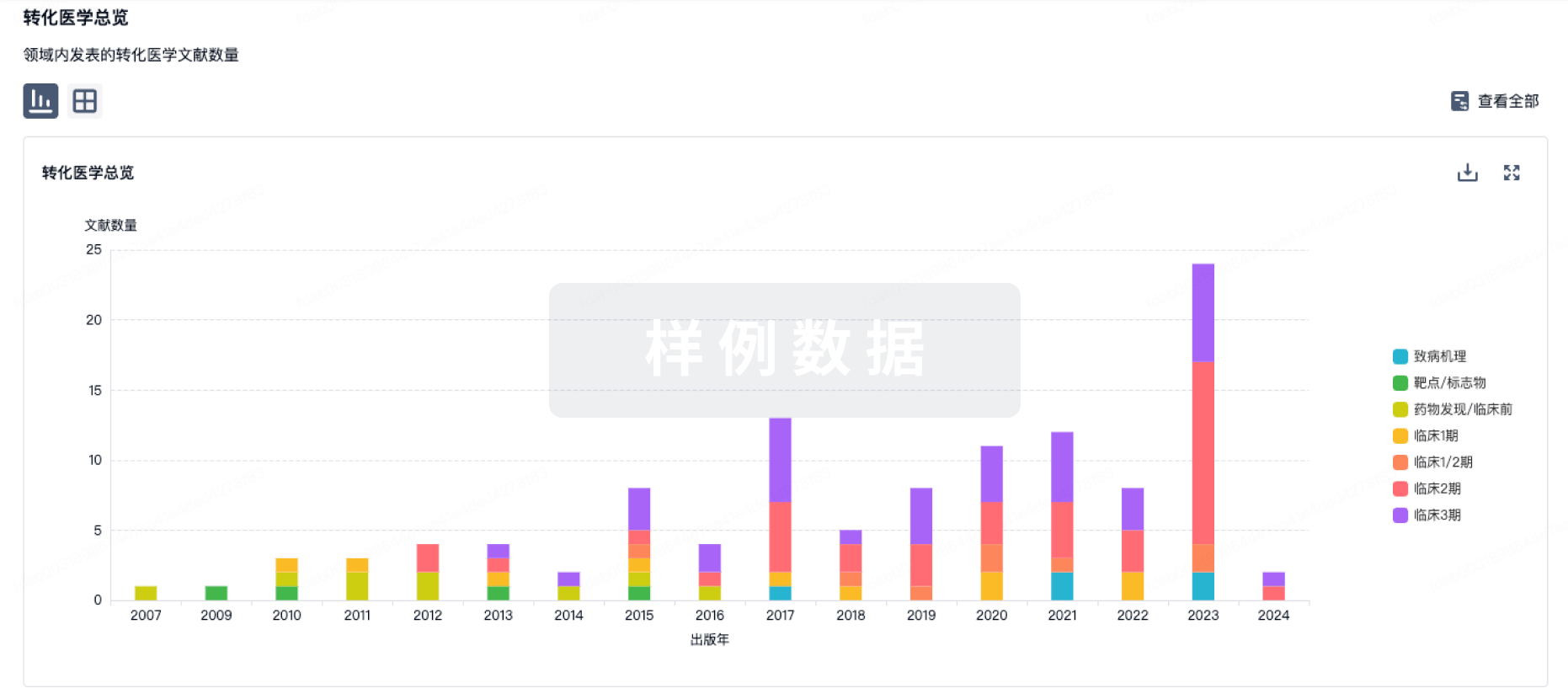
药物交易
使用我们的药物交易数据加速您的研究。
登录
或
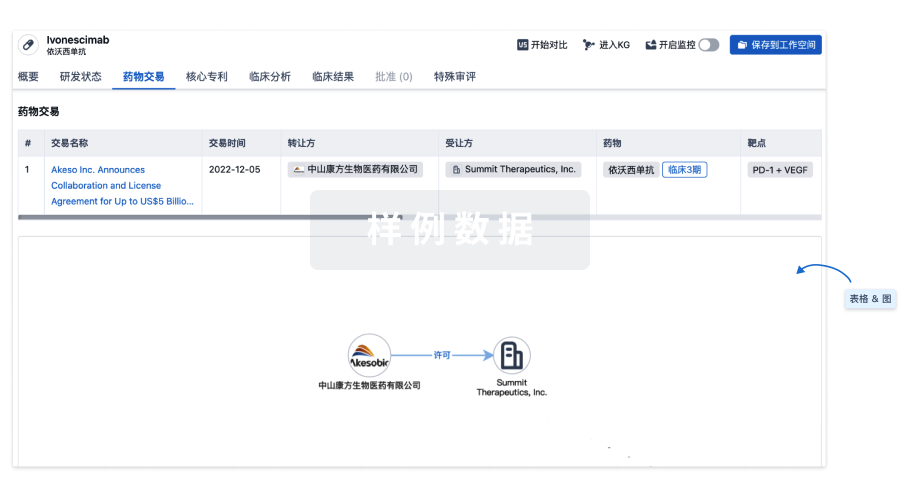
核心专利
使用我们的核心专利数据促进您的研究。
登录
或
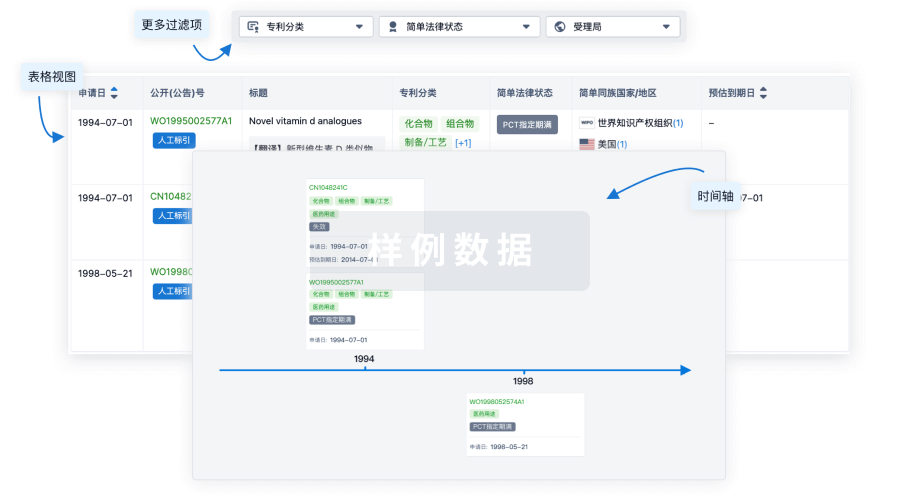
临床分析
紧跟全球注册中心的最新临床试验。
登录
或
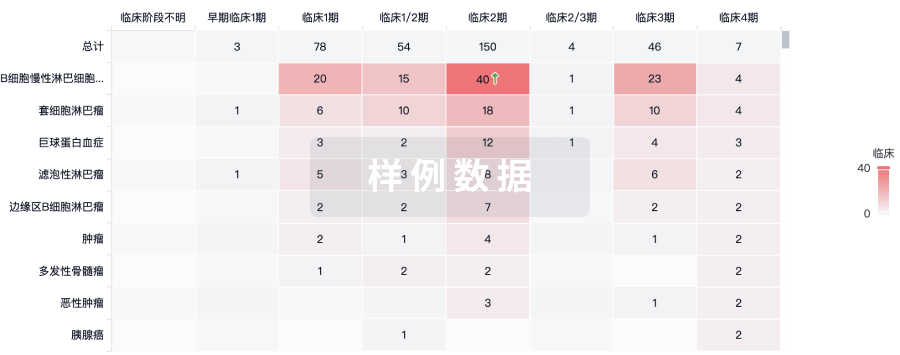
批准
利用最新的监管批准信息加速您的研究。
登录
或
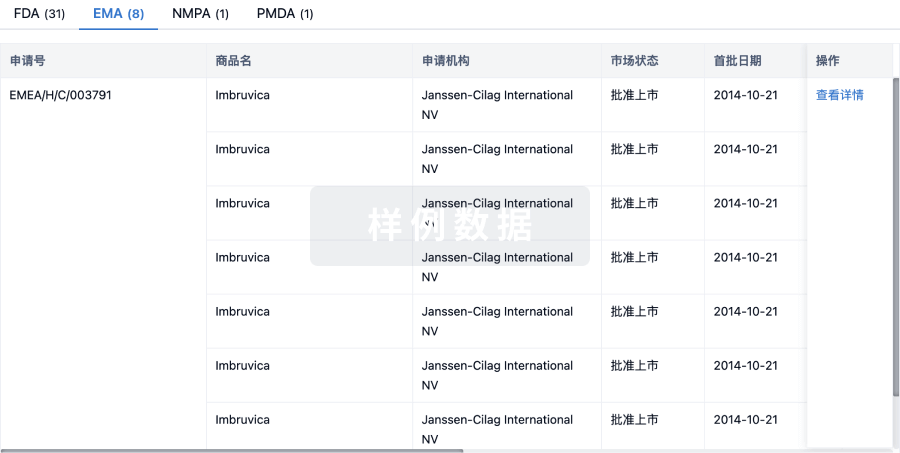
特殊审评
只需点击几下即可了解关键药物信息。
登录
或
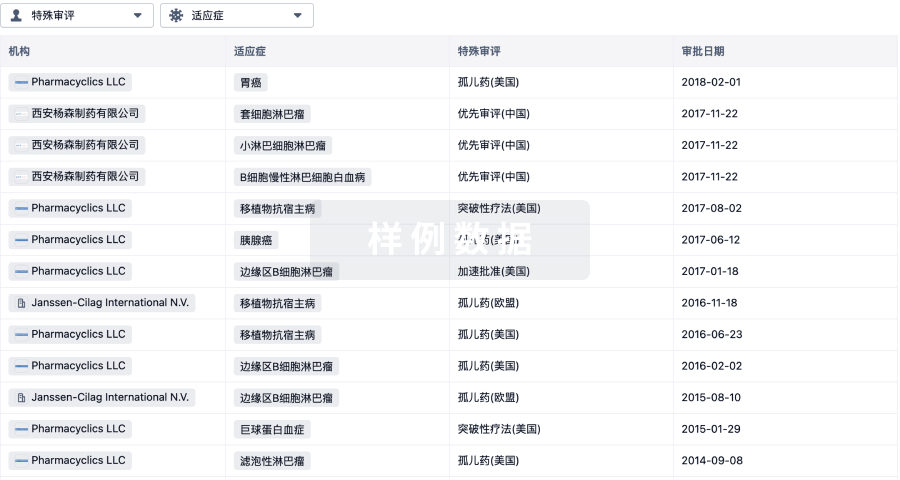
生物医药百科问答
全新生物医药AI Agent 覆盖科研全链路,让突破性发现快人一步
立即开始免费试用!
智慧芽新药情报库是智慧芽专为生命科学人士构建的基于AI的创新药情报平台,助您全方位提升您的研发与决策效率。
立即开始数据试用!
智慧芽新药库数据也通过智慧芽数据服务平台,以API或者数据包形式对外开放,助您更加充分利用智慧芽新药情报信息。
生物序列数据库
生物药研发创新
免费使用
化学结构数据库
小分子化药研发创新
免费使用

